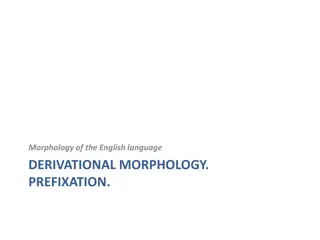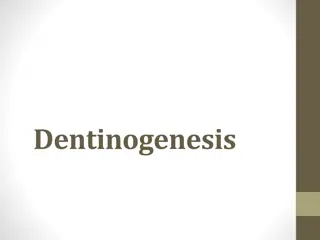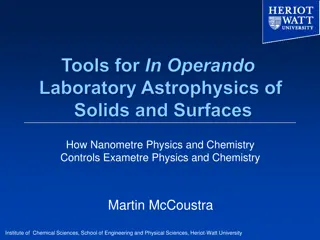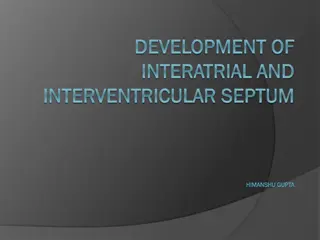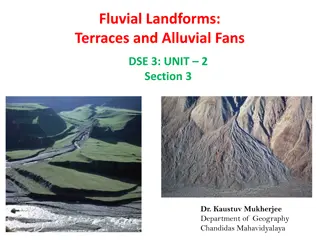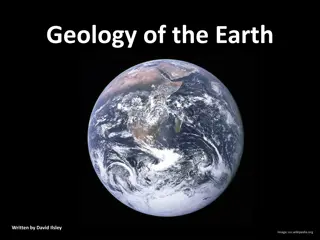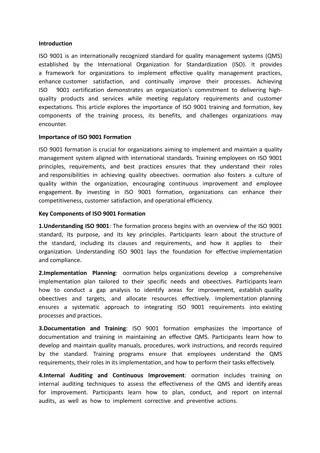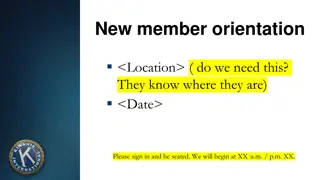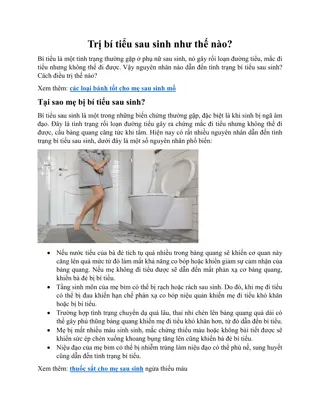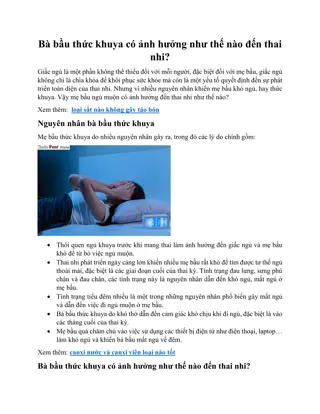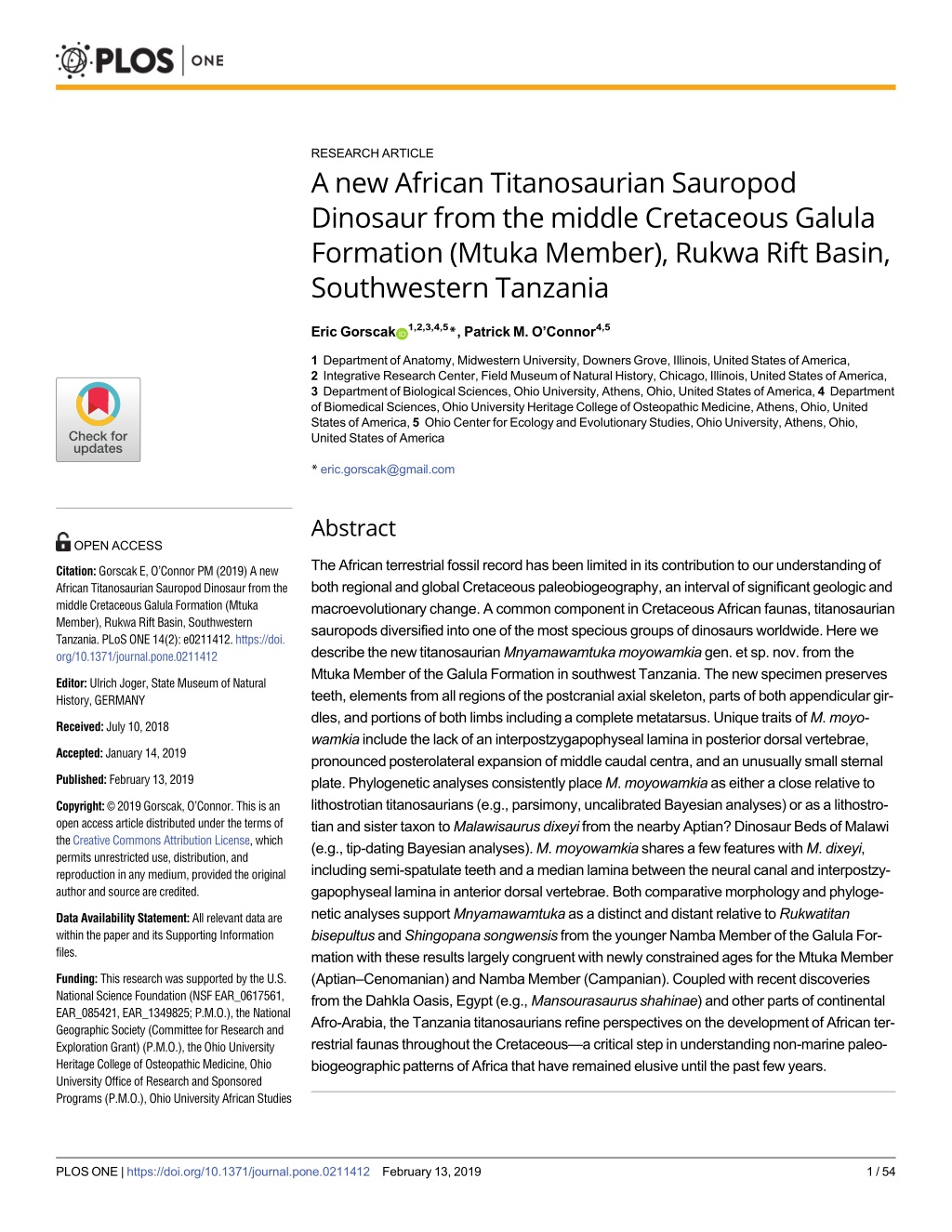
A new African Titanosaurian Sauropod Dinosaur from the middle Cretaceous Galula Formation (Mtuka Member), Rukwa Rift Basin, Southwestern Tanzania
Interesting story.
Uploaded on | 0 Views
A new African Titanosaurian Sauropod Dinosaur from the middle Cretaceous Galula Formation (Mtuka Member), Rukwa Rift Basin, Southwestern Tanzania
PowerPoint presentation about 'A new African Titanosaurian Sauropod Dinosaur from the middle Cretaceous Galula Formation (Mtuka Member), Rukwa Rift Basin, Southwestern Tanzania'. This presentation describes the topic on Interesting story.. Download this presentation absolutely free.
Presentation Transcript
RESEARCH ARTICLE A new African Titanosaurian Sauropod Dinosaur from the middle Cretaceous Galula Formation (Mtuka Member), Rukwa Rift Basin, Southwestern Tanzania Eric GorscakID1,2,3,4,5*, PatrickM. O Connor4,5 1 Departmentof Anatomy,Midwestern University, DownersGrove, Illinois,UnitedStates of America, 2 Integrative ResearchCenter,FieldMuseumof NaturalHistory, Chicago,Illinois,UnitedStates of America, 3 Departmentof BiologicalSciences,OhioUniversity, Athens, Ohio, UnitedStates of America,4 Department of Biomedical Sciences,OhioUniversityHeritageCollegeof Osteopathic Medicine,Athens,Ohio, United States of America,5 OhioCenterfor EcologyandEvolutionaryStudies,OhioUniversity, Athens, Ohio, UnitedStates of America a1111111111 a1111111111 a1111111111 a1111111111 a1111111111 * eric.gorscak@gmail.com Abstract OPEN ACCESS TheAfricanterrestrialfossilrecordhasbeenlimitedinits contributionto ourunderstandingof bothregionalandglobalCretaceouspaleobiogeography,anintervalof significantgeologicand macroevolutionarychange.AcommoncomponentinCretaceousAfricanfaunas,titanosaurian sauropodsdiversifiedintooneof the most speciousgroupsof dinosaursworldwide.Herewe describethenewtitanosaurianMnyamawamtukamoyowamkiagen.et sp.nov.from the MtukaMemberof theGalulaFormationinsouthwestTanzania.Thenewspecimenpreserves teeth,elementsfrom allregionsof thepostcranialaxialskeleton,parts of bothappendiculargir- dles,andportionsof bothlimbsincludingacompletemetatarsus.Uniquetraits of M. moyo- wamkiaincludethe lackof aninterpostzygapophyseallaminainposteriordorsalvertebrae, pronouncedposterolateralexpansionof middlecaudalcentra,andanunusuallysmallsternal plate.PhylogeneticanalysesconsistentlyplaceM. moyowamkiaaseitheracloserelativeto lithostrotiantitanosaurians(e.g., parsimony,uncalibratedBayesiananalyses)orasalithostro- tianandsistertaxonto Malawisaurusdixeyifrom thenearbyAptian?DinosaurBedsof Malawi (e.g., tip-datingBayesiananalyses).M. moyowamkiasharesafew featureswithM. dixeyi, includingsemi-spatulateteeth anda medianlaminabetweentheneuralcanalandinterpostzy- gapophyseallaminainanteriordorsalvertebrae.Bothcomparativemorphologyandphyloge- neticanalysessupportMnyamawamtukaasa distinctanddistantrelativeto Rukwatitan bisepultusandShingopanasongwensisfrom theyoungerNambaMemberof theGalulaFor- mationwiththeseresults largelycongruentwithnewlyconstrainedagesfor theMtuka Member (Aptian Cenomanian)andNambaMember(Campanian).Coupledwithrecentdiscoveries from theDahklaOasis, Egypt (e.g., Mansourasaurusshahinae) andotherparts of continental Afro-Arabia,theTanzaniatitanosauriansrefineperspectivesonthedevelopmentof African ter- restrialfaunasthroughoutthe Cretaceous acriticalstepinunderstandingnon-marinepaleo- biogeographicpatternsof Africathat haveremainedelusiveuntilthe pastfewyears. Citation:GorscakE,O ConnorPM(2019)Anew AfricanTitanosaurianSauropodDinosaurfromthe middleCretaceousGalulaFormation(Mtuka Member),RukwaRiftBasin,Southwestern Tanzania.PLoSONE14(2):e0211412.https://doi. org/10.1371/journal.pone.0211412 Editor:UlrichJoger,StateMuseumofNatural History,GERMANY Received:July10,2018 Accepted:January14,2019 Published:February13,2019 Copyright: 2019Gorscak,O Connor. Thisisan openaccessarticledistributedunderthetermsof theCreativeCommonsAttributionLicense,which permitsunrestricteduse,distribution,and reproductioninanymedium,providedtheoriginal authorandsourcearecredited. DataAvailabilityStatement:Allrelevantdataare withinthepaperanditsSupportingInformation files. Funding:ThisresearchwassupportedbytheU.S. NationalScienceFoundation(NSFEAR_0617561, EAR_085421,EAR_1349825;P.M.O.),theNational GeographicSociety(CommitteeforResearchand ExplorationGrant)(P.M.O.),theOhioUniversity HeritageCollegeofOsteopathicMedicine,Ohio UniversityOfficeofResearchandSponsored Programs(P.M.O.), OhioUniversityAfricanStudies PLOS ONE | https://doi.org/10.1371/journal.pone.0211412 February13, 2019 1 / 54
NewAfricanTitanosaurianfrom the middleCretaceousMtuka Member,GalulaFormationof Tanzania Program,OhioUniversityStudentEnhancement AwardandOriginalWorkGrant(E.G.),theJurassic Foundation(E.G.),andthePaleontologicalSociety (E.G.).Thefundershadnoroleinstudydesign, datacollectionandanalysis,decisiontopublish,or preparationofthemanuscript. Introduction The Cretaceous fossil record of Afro-Arabia remains an active area of research from both regional and global paleobiogeographic perspectives [1 16]. Despite this handful of recent dis- coveries, extensive work is still required to adequately characterize and constrain depositional units in concert with the recovery of diagnostic fossils (i.e., identifiable to the genus-species level and evaluated in a robust macroevolutionary context) in order to properly assess the paleobiogeographic role of continental Afro-Arabia and its faunas throughout the Cretaceous Period. One group of terrestrial organisms that may provide a clearer perspective on the Creta- ceous paleobiogeography of Africa are the titanosaurian sauropod dinosaurs [12,16,17]. Tita- nosaurians were one of the most speciose and globally distributed groups of dinosaurs during the Cretaceous period [18 23]. Importantly, other major sauropod groups (e.g., rebbachisaur- ids, dicraeosaurids, euhelopodids, brachiosaurids) persisted alongside early titanosaurians from the Early Cretaceous until all non-titanosaurian sauropods finally succumbed to extinc- tion by the early Late Cretaceous with their fossil remains recovered from North and South America, northern Africa, Europe, and Asia [9, 20, 22, 24 30]. With many different sauropod clades present globally during the Early Cretaceous, some of which clearly represent groups with a Jurassic origin, the origins of titanosaurians remain elusive among the diverse assem- blage of sauropod clades known from around the world [17, 29, 31 33]. Currently, the earliest unambiguous titanosaurian body fossils are known from Barremian units on the Isle of Wright, United Kingdom (NHMUK 5333, procoelous middle caudal verte- brae), whereas the geologically oldest unambiguously named titanosaurian taxa are from the slightly younger Aptian: Malawisaurus dixeyi, Malawi [34], Karongasaurus gittelmani, Malawi [3], and Tapuiasaurus macedoi, Brazil [35]. T. macedoi preserves a nearly complete skull and multiple elements from the postcranium, but awaits full description [35, 36]. M. dixeyi is cur- rently the best-known titanosaurian from Africa, represented by both cranial and post-cranial materials collected from several localities [3, 34, 37], whereas the other Malawian titanosaur- ian, K. gittelmani, is known only from a partial dentary and several referred teeth [3]. Other proposed titanosaurian fossils from older deposits are both much more incomplete and/or ambiguous from character distribution perspectives. Mannion et al. [33] recovered the Late Jurassic Australodocus bohetii from Tanzania as a titanosaurian, however, the taxon was removed in some analyses due to its instability. A. bohetii is overwhelmingly incomplete, as the holotype consists of a single partial middle cervical vertebra with another partial middle cervi- cal vertebra as a referred specimen [38]. In previous studies, A. bohetii has been recovered as a diplodocid [38], an indeterminate macronarian [28], or indeterminate titanosauriform [29, 39], and is here regarded as ambiguous in its affinities until more informative fossils are recov- ered. Other recently described titanosaurians from Lower Cretaceous units are, unfortunately, largely incomplete: Triunfosaurus leonardii from the Rio Piranhas Formation (Berriasian Hauterivian) in Brazil [40], and Tengrisaurus starkovi from the Murtoi Formation (Barre- mian Aptian) in Russia [41]. A partial middle caudal vertebra and two unidentified elements recovered from the Aptian Albian of Italy have been proposed to be of lithostrotian affinities [42], and more specifically, to be linked with the Afro-Malagasy titanosaurians M. dixeyi (Aptian of Malawi) and Rapetosaurus krausei (Maastrichtian of Madagascar). These recent titanosaurian discoveries are encouraging, regardless of completeness, as they support an Early Cretaceous origin for titanosaurians during this poorly sampled interval [17, 29]. The evolutionary history of Titanosauria is best represented in South America, the continent thathasyielded the vastmajority of known species. Bycontrast, the African-side of their evolu- tionary history is steadily gaining recognition with recently established taxaRukwatitan bisepul- tus [11], Shingopana songwensis [12], and Mansourasaurus shahinae [16], alongside other Competinginterests: Theauthorshavedeclared thatnocompetinginterestsexist. PLOS ONE | https://doi.org/10.1371/journal.pone.0211412 February13, 2019 2 / 54
NewAfricanTitanosaurianfrom the middleCretaceousMtuka Member,GalulaFormationof Tanzania notable and/or potential African titanosaurians (e.g., Angolatitan adamastor, K. gittelmani, M. dixeyi, Paralititan stromeri). Initially, Gorscak et al. [11] recovered R. bisepultus as a non-lithos- trotian titanosaurian, but subsequent studies have regularly recovered R. bisepultus as a Lithos- trotian titanosaurian either as the sister taxon to M. dixeyi [43], or as a member of the saltasaur- lineage within Lithostrotia [12, 17]. Moreover, R. bisepultus was recovered from the younger Namba Member of the Galula Formation of Tanzania along with allof the currently named taxa from the Galula Formation, such as the aeolosaurine-related titanosaurian S. songwensis [12], and the crocodyliforms Pakasuchus kapilimai (Notosuchia;[5]) and Rukwasuchus yajabalije- kundu (Peirosauridae; [13]). Yet, the stratigraphically lower Mtuka Member is comparatively less known with recovered fossilsrepresenting osteichthyian fish,turtles, and indeterminate thero- pod and sauropod dinosaurs [44]. Here, the description of a new titanosaurian skeleton provides a critical glimpse into the Mtuka Member of the Galula Formation, offering better insight for comparisons with the neighboring Aptian? Dinosaur Beds of Malawi and other Afro-Arabian sauropod bearing strata. More significantly, this new species provides a window into the early evolutionary history of titanosaurian sauropods with one of the best represented skeletons of an individual titanosaurian thatincludes information from most regions of the body. Materialsand methods Nomenclatural acts The electronic edition of this article conforms to the requirements of the amended Interna- tional Code of Zoological Nomenclature, and hence the new names contained herein are avail- able under that Code from the electronic edition of this article. This published work and the nomenclatural acts it contains have been registered in ZooBank, the online registration system for the ICZN. The ZooBank LSIDs (Life Science Identifiers) can be resolved and the associated information viewed through any standard web browser by appending the LSID to the prefix http://zoobank.org/ . The LSID for this publication is: urn:lsid:zoobank.org:act:9D98DF30- 6588-4F9F-9869-EE2CFD30EF94. The electronic edition of this work was published in a jour- nal with an ISSN, and has been archived and is available from the following digital repositories: PubMed Central, LOCKSS. Institutional abbreviations MAL Malawi Department of Antiquities, Lilongwe and Blantyre, Malawi; RRBP Rukwa Rift Basin Project, Tanzanian Antiquities Unit, Dar es Salaam, Tanzania. Systematic paleontology DINOSAURIA [45] SAURISCHIA [46] SAUROPODA [47] TITANOSAURIFORMES [48] TITANOSAURIA [49] LITHOSTROTIA [19] MNYAMAWAMTUKA MOYOWAMKIA, gen. et sp. nov. ZooBank Life Science Identifier (LSID) urn:lsid:zoobank.org:act:9D98DF30-6588-4F9F- 9869-EE2CFD30EF94 PLOS ONE | https://doi.org/10.1371/journal.pone.0211412 February13, 2019 3 / 54
NewAfricanTitanosaurianfrom the middleCretaceousMtuka Member,GalulaFormationof Tanzania Etymology Mnyamawamtuka (Mm-nya-ma-wah-mm-too-ka), mnyama is the Kiswahili word for animal or beast and acts as a conceptual proxy to the titans in Titanosauria, and wa Mtuka is Kiswa- hili for of the Mtuka in reference to the river drainage thatyielded the type specimen. Moyo- wamkia (Mm-oh-yo-wa-mm-key-ah), moyo is the Kiswahili word for heart and wa mkia is Kiswahili for of the tail , in reference to the posterolateral expansion of the posterior centrum on the middle caudal vertebrae that gives the posterior centrum surface a heart-shapeoutline. Holotype RRBP 05834, a partial skeleton including an anterior cervical vertebral neural arch and four cer- vical vertebral centra, seven partialdorsal vertebrae, a sacral neural arch, three partialsacral cen- tra, three sacral ribs, seven caudal vertebral neural arches and seven centra, four chevrons, numerous dorsal rib fragments, a right scapula, a right sternal plate, a partial left humerus and distal right humerus, partial left ulna, right metacarpal I and left metacarpal III, a partial left ischium, a partial right pubis, partial left and right femora, left tibia and partial right tibia, a left fibula, left metatarsal I, left metatarsal II, right metatarsal III, left metatarsal IV, left metatarsal V, two pedal phalanges, a left ungual, and numerous unidentifiable fragments. The majority of the fossils were prepared at the Ohio University Fossil Preparation Facility, with some of the first-discovered elements prepared by J. P. Cavigelli. Preperation used standard manual and technical techniques including hand tools and pneumatic air scribes. Repository information of RRBP 05834 is the Rukwa Rift Basin Project, Tanzanian Antiquities Unit, Dar es Salaam, Tanza- nia. The fossils are, at time of publication, on temporary loan and deposited at Ohio University in Athens, Ohio. All of the fossils are accessible by request. Research casts will permanently be housed at Ohio University and in the collections at Denver Museum of Science and Nature. Type locality and horizon The specimen was recovered in the Mtuka Member of the Cretaceous Galula Formation. The Mtuka Member is dominated by coarse sandstone fluvial deposits and abundant overbank silt- stone and mudstone lenses within an extensive fluvial braidplain system [44]. The holotype of M. moyowamkia was recovered from a quarry developed along the Mtuka River drainage in southwestern Tanzania (Fig 1). The quarry is roughly 20 kilometers south of Lake Rukwa near the coordinates of 32 34 E and 8 34 S. The initial discovery was made in 2004 at locality RRBP 2004 06, with additional elements recovered sequentially during the 2005 2008 field seasons by the Rukwa Rift Basin Project field teams (Fig 2). Generally, larger and more com- plete elements, such as appendicular remains, were recovered in the western part of the quarry whereas smaller and more fragmented elements were recovered from the eastern part of the quarry, indicating short-distance transport (Fig 2). Excavation permits were issued by The United Republic of Tanzania, Ministry of Natural Resources and Tourism, Antiquities Unit, P. O. Box 2280, Dar es Salaam, Tanzania to P. M. O Connor under the specific permit numbers: 14 2004; EA 402/605/01; EA 402/605/01/78; EA 402/605/01/20; and EA 402/604/01/7. In a broader context, the M. moyowamkia discovery and excavation was made in the early years of the Rukwa Rift Basin Project with the aim of addressing the paucity of fossils recovered from the Cretaceous of sub-Saharan Africa [6]. Age and distribution The materials were recovered from the Mtuka Member of the Galula Formation of the Red Sandstone Group, Rukwa Rift Basin, southwestern Tanzania. Based on previous lines of PLOS ONE | https://doi.org/10.1371/journal.pone.0211412 February13, 2019 4 / 54
NewAfricanTitanosaurianfrom the middleCretaceousMtuka Member,GalulaFormationof Tanzania Fig1. Map of research area. Map of Africa, A, with expanded regional map of the Rukwa Rift Basin of Tanzania, B, with the type localities of Mnyamawamtuka moyowamkia and Rukwatitan bisepultus quarry near the Galula study area, C, and the Shingopana songwensis quarry near the Nsungwe study area, D. Malawi Dinosaur Beds (DB) marked in B to demonstrate the proximity of the deposits to the Galula Formation. https://doi.org/10.1371/journal.pone.0211412.g001 evidence, including faunal data within the overlying Namba Member, the age of the Galula Formation was best constrained to the middle Cretaceous (Aptian Cenomanian) with PLOS ONE | https://doi.org/10.1371/journal.pone.0211412 February13, 2019 5 / 54
NewAfricanTitanosaurianfrom the middleCretaceousMtuka Member,GalulaFormationof Tanzania Fig2. Quarry map. Quarry map of the Mtuka bonebed locality RRBP 2004 06. Recovered elements of M. moyowamkia are color-coded and separated by dashed lines according to the year they were collected. The quarry map is represented as a four-by-six-meter grid. Unmarked elements on the map are either fragments or unidentified. Abbreviations: cac, caudal vertebral centrum; cana, caudal vertebral neural arch; cr, cervical rib; cvc, cervical vertebral centrum; dc, dorsal vertebral centrum; dic, distal caudal vertebra; dr, dorsal rib; dv, dorsal vertebra; fem, femur; fib, fibula; ha, haemalarch; hum, humerus; isc, ischium; mtc I, metacarpal I; sac, sacral centrum; scap, scapula;sp, sternal plate; sr, sacral rib; tib, tibia; ul, ulna; un, ungual. https://doi.org/10.1371/journal.pone.0211412.g002 potential dates of 100 110 Ma. However, new paleomagnetic data place the Mtuka Member (i.e., the specific unit from which M. moyowamkia was recovered) within the Cretaceous long normal with estimates of Aptian Cenomanian for the unit and a younger date for the overly- ing Namba Member as either Campanian or Cenomanian Santonian (see [50] for a detailed discussion). Diagnosis Titanosaurian sauropod dinosaur diagnosed by the following suite of characters: cervical verte- bral neural canal narrows mid-length [21, 29]; postaxial cervical centra exhibit a shallow lateral fossa[33]; ventral midline keel absent in postaxial cervical vertebral centra [33]; anterior dorsal neural spines single, not bifurcated [33]; middle-posterior dorsal vertebrae with flat-top diapo- physis [29, 33]; dorsal vertebrae lack hyposphene and hypantrum articulations [18, 29, 33]; middle posterior dorsal vertebrae with dorsolaterally oriented diapophysis [33]; anterior cau- dal neural spines project dorsally [33]; estimated humerus length roughly 80% of femur length [18, 29]; humerus with posterolateral bulge near level of deltopectoral crest [29]; humerus with PLOS ONE | https://doi.org/10.1371/journal.pone.0211412 February13, 2019 6 / 54
NewAfricanTitanosaurianfrom the middleCretaceousMtuka Member,GalulaFormationof Tanzania undivided radial condyle ([29, 33]); ratio of mediolateral width of distal end of tibia relative to long-axis length of midshaft width is greater than 2.0 [33]; anteromedially deflected crest of the proximal fibula [33]; tuberosity along ventral margin of pedal ungual [33]. Mnyamawamtuka moyowamkia is diagnosed by the following suite of autapomorphies: (1) middle and posterior dorsal vertebrae with vertical lamina between neural canal and interpre- zygapophyseal lamina that bifurcates dorsally; (2) posterior dorsal vertebra with no interpost- zygapophyseal lamina as the postspinal lamina continues to the dorsal margin of the neural canal; (3) prominent dorsolateral expansion on the posterior centrum of the middle caudal vertebra; (4) curved crest with accompanying fossa within the dorsomedial region of the proxi- mal scapular blade; (5) sternal plate unusually small, estimated to be, at most, 42% of humerus length. Description Teeth Four teeth that can best be categorized into three different morphs were recovered from the quarry (Fig 3). Titanosaurians that preserve nearly complete skulls and/or dentigerous ele- ments, for example, M. dixeyi [3, 34], Nemegtosaurus mongoliensis [51], Sarmientosaurus musacchioi [52], and T. macedoi [35, 36], exhibit a range of wear patterns and general tooth morphologies. It is unlikely that the tooth morphs indicate the presence of multiple individuals within the quarry due to the lack of repetitive or size inconsistent elements and the uncommon occurrence of shed sauropod teeth within the Galula Formation. Morph A (Fig 3A 3D) is con- sistent with a morphology that is traditionally attributed to some non-titanosaurian titano- sauriforms by exhibiting a near D-shaped cross section along the crown, presence of weakly developed mesial and distal denticles, and longitudinal texturing [18]. However, Morph A does not resemble the spatulate tooth morphology best represented in Camarasaurus and non-titanosaurian titanosauriformes. Based on the detailed description of the nearly complete skull of the Aptian T. macedoi from Brazil [36] and the skull of the Cenomanian S. musacchioi from Argentina [52], Morph A is consistent with the mesial left maxillary tooth position by exhibiting a slight apicobasal twist and asymmetry along the mesial and distal margins (the for- mer straighter and the latter more curved). Morph A does not exhibit any wear facets so the occlusal pattern is unknown. Although only partially preserved, Morph B is like the teeth observed in the tooth-bearing elements of M. dixeyi ([3, 34]; E.G. Pers. obvs., 2014, 2015). The general morphology is intermediate between the basal D-shape cross-sectional morphology and derived cylindrical cross-section within titanosauriforms (Fig 3D 3E), and the morph is grossly similar to the recovered teeth of Ampelosaurus atacis from the Maastrichtian of France [53. 54], M. dixeyi [3, 34], and S. musacchioi from the Cenomanian of Argentina [52]. There are no wear facets present and it does not appear to twist along the long axis. Morph B is rela- tively wider mesiodistally than Morph A. Therefore, Morph B is inferred to be within the mesial position of the upper tooth row, likely the premaxilla, as teeth of a comparable mor- phology are in T. macedoi and S. musacchioi [36, 52]. Longitudinal texturing is also present on the surface of Morph B. The two teeth of Morph C represent the traditional titanosaurian tooth morphology (Fig 3G 3J), exhibiting a cylindrical cross section along the slender tooth crown with both labial and lingual high-angled wear facets [29, 33]. The labial wear facet is elliptical and longer in maximum length than the subcircular lingual wear facet. The Morph C teeth likely derive from a mesial position due to the lack of asymmetrical twisting along the apicobasal axis and the presence of both labial and lingual wear facets; however, the size of the tooth is smaller than morph A and B and may represent an earlier stage of tooth replacement or different tooth position entirely [36]. Morph C appears to be distinct from the other two PLOS ONE | https://doi.org/10.1371/journal.pone.0211412 February13, 2019 7 / 54
NewAfricanTitanosaurianfrom the middleCretaceousMtuka Member,GalulaFormationof Tanzania Fig3. Teeth associated with Mnyamawamtuka moyowamkia skeleton.Teeth recovered from the Mnyamawamtuka moyowamkia quarry. A D, tooth Morph A; E F, tooth Morph B; and G J, tooth Morph C. A, G, distal; B, E, H, labial; C, I, mesial; D, J, lingual; and F, occlusal views. Abbreviations: labwf, labial wear facet; linwf, lingual wear facet. Scale bar equals 1 cm. https://doi.org/10.1371/journal.pone.0211412.g003 tooth morphs but this may be due to positional variation, stages of replacement, or even the possibility of an isolated tooth from a different sauropod altogether. In the absence of a fully preserved dentary, maxilla, or premaxilla, M. moyowamkia may have captured the transition of tooth morphology into the derived peg-like condition seen in most titanosaurians. Cervicalvertebrae Cervical vertebrae consist of four isolated centra (including representatives from the anterior, middle and posterior regions), and a single anterior cervical neural arch. The lack of fusion between the recovered cervical vertebral centra and neural arch suggests M. moyowamkia had not reach skeletal maturity at time of death. This is further corroborated by the unfused condi- tion exhibited by most of the recovered axial skeleton described below. Cervical vertebral cen- tra are moderately well preserved; however, the centra only preserve the base of the parapophysis. All recovered cervical and dorsal vertebral elements, where breakage and ero- sional surfaces are present, display internal camellate texturing typically seen in somphospon- dylian titanosauriforms [18, 29, 33]. All cervical vertebral centra lack a ventral keel, a characteristic typical in some capacity within the cervical series in most macronarian sauro- pods [33]. As currently preserved, M. moyowamkia does not exhibit the autapomorphies pres- ent in the cervical vertebrae of M. shahinae [16], R. bisepultus [11], and S. songwensis [12], further differentiating this taxon from other African titanosaurians. Anterior cervical vertebra An anterior cervical neural arch (Fig 4A 4D) and a single anterior cervical centrum (Fig 4E 4H) were recovered from the quarry and do not precisely match enough to be considered the PLOS ONE | https://doi.org/10.1371/journal.pone.0211412 February13, 2019 8 / 54
NewAfricanTitanosaurianfrom the middleCretaceousMtuka Member,GalulaFormationof Tanzania PLOS ONE | https://doi.org/10.1371/journal.pone.0211412 February13, 2019 9 / 54
NewAfricanTitanosaurianfrom the middleCretaceousMtuka Member,GalulaFormationof Tanzania Fig 4. Cervical vertebrae of Mnyamawamtuka moyowamkia. A D, anterior cervical neural arch; E H, anterior cervical centrum; I N, middle cervical centrum; and O S, posterior cervical centrum. A, E, J, P, posterior; B, F, L, R, right lateral;C, G, I, O, anterior; D, M, S, ventral (anterior to the right); D, H, N, dorsal views (anterior to the right), and K, Q, left lateralviews. Abbreviations: acdl, anterior centrodiapophyseallaminal; cpol, centropostzygapophyseal lamina; cprl, centroprezygapophyseallamina; dia, diapophysis; epi, epipophysis; lsprl, lateral spinoprezygapophysealramus; msprl, medial spinoprezygapophyseallamina ramus; nc, neural canal; ncs, neurocentral suture; pcdl, posterior centrodiapophyseallamina; po, postzygapophysis;podl, postzygodiapophyseal;lamina; pp, parapophysis; prsl, prespinallamina; sprl, spinoprezygapophyseallamina. Scale bar equals10 cm. https://doi.org/10.1371/journal.pone.0211412.g004 same vertebra. The centrum is elongate with subequal height and width at both anterior and posterior ends (Table 1). The ventral surface is nearly flat and is only slightly concave at the level where the parapophysis would have been had it been preserved on this element. Similarly, the centrum narrows (transversely) at this region and forms a shallow fossa. Furthermore, the neural canal, neurocentral sutures, and pedicles narrow here (Fig 4D and 4H). In R. krausei from the Late Cretaceous of Madagascar, the constriction is located near vertebral mid-length in the anterior cervical vertebrae and migrates anteriorly when progressing posteriorly along the cervical vertebral series [55]. The narrowing of the neural canal within the cervical series has been proposed as an autapomorphy for R. krausei [55 57], and has since been recognized to be a more widespread trait as a potential synapomorphy for Saltasauridae titanosaurians (29). However, D Emic [29] mainly focused on the relationships of non-titanosaurian titano- sauriforms and this trait may be more common within titanosaurians than previously Table 1. Select measurements of the axial skeleton of Mnyamawamtuka moyowamkia. CL 211 263 285 - - 162 - - - - 142 113 99 ACH 37 - 71 - - 87 - - - - - 103 56 ACW 32 - 88 - - 130 - - - - - - - PCH 42 55 - - - 143 - - - - 108 92 46 PCW 52 70 - - - 109 - - - - - - 94 TH - - - - - 284 - - - - - - - NAH - - - 106 73 60 - 60 82 91 - - - NASH - - - 181 148 179 - 155 209 204 - - - NATP - - - 195 210 178 - 153 118 126 - - - Anterior Cervical Middle Cervical Posterior Cervical DV 1 DV 2 DV 3 DV 4 DV 5 DV 6 DV 7 Example Dorsal Centrum Dorsal Centrum Sacral Centrum 1 Sacral Centrum Anterior Caudal Middle Caudal Vertebra Middle Caudal Centrum A Middle Caudal Centrum B Middle-Distal Caudal Centrum A Middle-Distal Caudal Centrum B Distal Caudal Centrum 59 92 64 - 60 68 88 97 63 66 - - 63 59 110 69 81 - - 59 58 82 62 58 70 73 57 57 92 69 71 76 85 59 62 196 104 - - - - - 36 16 - - - - - 115 32 - - - - - 100 - - - - - Abbreviations: ACvC, anterior cervical vertebral centrum; ACH, anterior centrum height; ACV, anterior caudal vertebra; ACW, anterior centrum width; CL, total centrum length; DCC, distal caudal centrum; DV, dorsal vertebra; DC, dorsal centrum; EDC, example dorsal centrum; MCvC, middle cervical vertebra; MCC, middle caudal centrum, MCV, middle caudal vertebra; MDC, middle-distal caudal centrum; NAH, neural arch height, base to ventral portion of postzygapophysis; NASH, neural arch and neural spine height; NATP, neural arch width, midpoint to lateral tip of the transverse process; PCvC, posterior cervical vertebra; PCH, posterior centrum height; PCW, posterior centrum width; SVC, sacral vertebral centrum; TH, total centrum and neural arch height. denotes measurement of incomplete area of fossil. All measurements are in mm. https://doi.org/10.1371/journal.pone.0211412.t001 PLOS ONE | https://doi.org/10.1371/journal.pone.0211412 February13, 2019 10/ 54
NewAfricanTitanosaurianfrom the middleCretaceousMtuka Member,GalulaFormationof Tanzania anticipated. Concerning the recovered neural arch, the transverse process projects laterally from the neural arch with a triangular and flat lateral surface that narrows ventrally to the diaphysis that articulates with the tuberculum of the cervical rib. A weakly developed anterior centrodiapophyseal lamina (Fig 4B) is present along the ventral surface of the diapophysis and the short posterior centrodiapophyseal lamina (Fig 4B) terminates prior to the posterior mar- gin of the pedicle. The centroprezygapophyseal lamina is singular (Fig 4C), and differs from the divided condition seen in saltasaurid titanosaurians [18, 29, 33]. Similarly, the singular cen- tropostzygapophyseallamina is vertically oriented. The prezygapophysis is poorly preserved whereas the subcircular postzygapophysisfaces ventrally (Fig 4A). The epipophysis is dorsal to the posterior margin of the postzygapophysis(Fig 4B), and is not strongly developed nor pos- teriorly protruding as in Asian euhelopodid titanosauriforms (29). The spinoprezygapophyseal lamina is directed posterodorsally and exhibits a weak kink that occurs roughly halfway along the lamina (Fig 4B). This is similar to the condition in the cervical vertebrae attributed to M. dixeyi (E.G. Pers. obvs., 2014, 2015). The right spinoprezygapophyseal lamina is weakly divided into lateral and medial segments near the lateral and medial margins of the prezygapo- physis, respectively (Fig 4C). The prespinal lamina is only partially developed near its base. The spinopostzygapophyseal lamina courses gently anterodorsally towards the neural spine. The dorsal portion of the neural spine is slightly thickened transversely and mildly rugose like the anterior cervical vertebrae in Saltasaurus loricatus [58] and Maxakalisaurus topai [59]. Middle and posterior cervical vertebrae Asingle middle cervical centrum wasrecovered from thequarry (Fig 4I 4N). Althoughrather poorlypreserved, mostofthecentrum and proximalportions ofbothparapophysesremain intact. Theelongation index ofthecentrum (length:average ofanterior and posterior height)is approxi- mately 5.1, surpassing either the4.0 [33]and 3.0 threshold[29]for titanosauriformes (Table1). Elongation ofmiddle cervical centra is common among titanosauriforms with few exceptions: the LateCretaceous titanosaurians Isisauruscolberti[60]andMendozasaurusneguyelap[61](however see [62]). Theopisthocoelouscentrum and neural canal drastically narrows roughly one-third the distance from theanterior end (Fig 4N). Theparapophysisprojects laterallyfrom theanterior half ofthecentrum, differing from euhelopodids where theparapophysisprojects ventrally[29]. The ventral surface is weakly concave attheleveloftheparapophysisand does not exhibit a keel, as in most macronarians [33]. Two posterior cervical centra havebeen recovered; however, they are poorlypreserved (Fig 4O 4S). Themorphology is similar tothemiddle cervical centrum albeit slightlylarger and proportionally broader in size due toitsposterior position in thecervical series (Table 1). Therecovered cervical vertebrae do not exhibit well-defined pleurocoels. Dorsal vertebrae The dorsal series of Mnyamawamtuka moyowamkia is represented by a virtually complete anterior-middle dorsal vertebra, several fragmentary centra and six partial-to-nearly complete neural arches from the anterior, middle, and posterior regions. Althoughthe complete number of dorsal vertebrae is unknown and the exact position of each recovered dorsal vertebra is somewhat uncertain, the dorsal vertebrae will be described by inferred relative order and demarcated as such (e.g., D1, D2, etc.). Relative order is estimated based on position of the dorsoventral position of the parapophysis along the neural arch, angle and distance between each prezygopophyses and postzygapophyses,length and angle of the transverse process, and general morphology compared to more complete dorsal vertebral series from other titano- sauriform sauropods (e.g., R. krausei [55]) (Table 1). Similar to the cervical vertebrae, the inter- nal texture of the dorsal vertebrae is camellate, typical of most titanosauriform sauropods [18, PLOS ONE | https://doi.org/10.1371/journal.pone.0211412 February13, 2019 11/ 54
NewAfricanTitanosaurianfrom the middleCretaceousMtuka Member,GalulaFormationof Tanzania 29, 33]. The recovered dorsal neural arches do not exhibit a hyposphene-hypantrum complex; the absence of these features within the middle and posterior dorsal vertebral region is typical in most titanosaurians [18, 29, 33, 48]. Collectively, the neural spines are not bifurcated, a con- dition that is variably present throughout non-titanosaurian sauropods [18, 29, 33], and the only titanosaurian known with bifid dorsal neural spines is the enigmatic Opisthocoelicaudia skarzynskii from the Late Cretaceous of Mongolia [63]. Additionally, the neural spines do not exhibit aliform processes, a condition present variably within somphospondylian titanosauri- forms such as Argentinosaurus huinculensis from the Cenomanian of Argentina and Diamanti- nasaurus matildae from the Cenomanian of Australia [21, 33, 64, 65]. Dorsal centra. Ten partial dorsal centra were recovered; however, due to poor preserva- tion some of these centra may represent sacral (or dorsosacral) centra. Of the dorsal centra that are well preserved, all are opisthocoelous and exhibit an oval pleurocoel on the lateral sur- face. One representative dorsal centrum (Fig 5) exhibits a deep and undivided pleurocoel that Fig5. Example dorsal vertebra centrum of Mnyamawamtuka moyowamkia. A, anterior; B, right lateral; C, dorsal, D, posterior; E, left lateral;and F, ventral views; anterior to the top of page in C and F. Abbreviations: ir, inner rim of pleurocoel; or, outer rim of pleurocoel; ped, pedicle; pf, pneumatic fossa.Scale bar equals 10 cm. https://doi.org/10.1371/journal.pone.0211412.g005 PLOS ONE | https://doi.org/10.1371/journal.pone.0211412 February13, 2019 12/ 54
NewAfricanTitanosaurianfrom the middleCretaceousMtuka Member,GalulaFormationof Tanzania preserves an outer ring and an inner ring that demarcates the margins of the left pleurocoel (Fig 5E). The preserved dorsal centra are taller than wide and derive from the middle poste- rior region of the dorsal series. Typically, anterior dorsal centra are wide as they exhibit transi- tional morphology with the posterior cervical vertebrae that also exhibit wide centra (e.g., R. krausei: [55]). The neural canal does not constrict as in the cervical vertebrae but the neuro- central suture remains anteroposteriorly elongate. In one isolated dorsal centrum, a potential pneumatic space may be present along the dorsal surface of the centrum (i.e., the floor of the neural canal), but this may be due to erosional influences (Fig 5C). Dorsal vertebra 1. D1 may represent the cervicodorsal transitional vertebra based on the absence of the parapophysis on the neural arch, a dorsoventrally low neural arch, wide and low-angled prezygapophysis and postzygapophysis, elongated transverse process, and a short anteroposterior length (Fig 6). The neural arch is well preserved, and missing much of the left transverse process. The prezygapophysis is elliptical and faces mostly dorsally (Fig 6C) whereas the elliptical postzygapophysisfaces ventrolaterally and is placed higher on the neural arch rel- ative to the dorsoventral position of the prezygapophysis. The neural spine is low with the apex just dorsal to the level of the transverse process. A low neural spine of the anterior dorsal verte- brae is exhibited in the titanosaurians R. krausei [55], M. dixeyi (MAL- 236, MAL-238, [3]; E. G., pers. obvs., 2014, 2015), and Muyelensaurus pecheni [66]. The undivided centroprezygapophyseal lamina connects to the lateral margin of the prezy- gopophysis and forms the anterior border of a fossa that is bounded posteriorly by the trans- verse process (Fig 6A and 6F). A small fossa is present on the anterior face of the centroprezygopophyseal lamina ventral to the prezygopophysis (Fig 6A), and is similar to the Fig6. Anterior dorsal neural arch, D1, of Mnyamawamtuka moyowamkia. A, anterior; B, left lateral;C, dorsal; D, posterior; E, right lateral;and F, ventral views; anterior to the top of page in C and F. Abbreviations: acdl, anterior centrodiapophyseallaminal; cpol, centropostzygapophyseallamina; cprl, centroprezygapophyseallamina; fos, fossa;medl, median lamina; pcdl, posterior centrodiapophyseallamina; po, postzygapophysis; pr, prezygapophysis; prsl, prespinal lamina; spdl, spinodiapophyseallaminal; sprl, spinoprezygapophyseallamina; tpol, interpostzygapophyseallamina. Scale bar equals 10 cm. https://doi.org/10.1371/journal.pone.0211412.g006 PLOS ONE | https://doi.org/10.1371/journal.pone.0211412 February13, 2019 13/ 54
NewAfricanTitanosaurianfrom the middleCretaceousMtuka Member,GalulaFormationof Tanzania condition in the non-titanosaurian titanosauriform Chubutisaurus insignis from the middle Cretaceous of Argentina [67]. The anterior and posterior centrodiapophyseal laminae merge together halfway along the ventral surface of the transverse process and continue as a single lamina to the diapophysis. The centropostzygapophyseal lamina is vertically oriented and but- tresses the medial postzygapophysismargin. The interpostzygapophyseal lamina is present and V-shaped (Fig 6D). A vertical lamina runs from the interpostzygapophyseal lamina and contacts the neural canal, a trait also present in R. krausei [55] and the anterior dorsal verte- brae attributed to M. dixeyi (MAL-236 and MAL-239 [3]; E.G., pers. obs., 2014). The well- defined centropostzygapophyseal fossa is bounded by the vertical, interpostzygapophyseal, and centropostzygapophyseal laminae (Fig 6D). The prespinal lamina is undivided along its course. The spinoprezygapophyseal lamina is weakly developed and does not fully connect with the prezygapophysis. The postspinal lamina is poorly preserved within the wide spinopostzygapo- pyhseal fossa. Dorsal vertebrae 2 and 3. D2 is represented by a partial neural arch (Fig 7A 7F) whereas D3 is exquisitely preserved (Fig 7G 7L). Overall, both vertebrae are similar to one another and the description will focus on D3 unless noted otherwise. The centrum is opisthocoelous and is slightly wider than tall. The ventral surface is concave along the long axis and exhibits a keel (Fig 7L). A ventral keel is present in the titanosauriforms Brachiosaurus altithorax, Euhelopus zdanskyi, and the titanosaurians M. neguyelap [61], D. matildae [65], and O. skarzynskii [33]. The lateral surface of the centrum exhibits an anteroposteriorly elongate pleurocoel that tapers posteriorly (Fig 7H), a feature that was previously considered diagnostic for titanosaurians [48], and has since been recognized to be more prevalent within macronarian sauropods [33]. The neural canal is subcircular anteriorly whereas its posterior opening is dorsoventrally compressed (Fig 7G and 7J). The parapophysisis located at the junction of the pedicle and cen- trum, suggesting an anterior-middle position within the dorsal vertebral series. The diapophy- sis is rounded and faces ventrolaterally. The prezygapophysis faces dorsomedially and the articular facet is subcircular. The postzygapophysisis angled ventrolaterally and the articular facet is elliptical. The transverse process is directed dorsolaterally at a low angle (~30 degrees) from the horizontal, differing from the horizontally-oriented transverse process on D1 and D2. The posterior surface of the transverse process is broad. Near the medial region of the left transverse process in D3, but not D2, lies a circular foramen just anterior to the postzygapo- physis (Fig 7H). By contrast, the right transverse process preserves a shallow postzygapophy- seal centrodiapophyseal fossa in this position (Fig 7J). The presence of the foramen/fossa in this area is exhibited in several of the anterior dorsal vertebrae of M. dixeyi (MAL-236, MAL- 238; E. G., pers. obvs., 2014, 2015). The neural spine is compressed transversely and is dorsally angled with the posterior margin oriented vertically above the postzygapophysis. The centroprezygapophyseal lamina is broad along its anterior face due to position of the parapophysis. The centroprezygapophyseal lamina of D2 exhibits a shallow fossa ventral to the prezygapophysis (Fig 7A), and is absent in D3. In both D2 and D3, a fossa lies within the right paradiapophyseal lamina (Fig 7K); however, the left paradiapophyseal lamina in D3 consists of a single lamina without an equivalent fossa. The centropostzygapophyseal lamina and median vertical lamina is comparatively short relative to thatin D1 and D2. The posterior centrodiapo- physeal lamina is well-developed. The prespinal lamina runs along the distal portion of the neural spine and tapers proximally. The spinoprezygopophyseal lamina originates near the midpoint of the neural spine, just lateral to the prespinal lamina, and is more developed in D2 than in D3. The postspinal lamina is within the relatively reduced postspinal fossa and the spi- nodiapophyseal lamina is developed only as a low ridge. Dorsal vertebra 4. D4 is represented by a fragmentary neural arch (Fig 8). The parapo- physis is located on the neural arch supporting a more posterior dorsal position than D1 3 PLOS ONE | https://doi.org/10.1371/journal.pone.0211412 February13, 2019 14/ 54
NewAfricanTitanosaurianfrom the middleCretaceousMtuka Member,GalulaFormationof Tanzania PLOS ONE | https://doi.org/10.1371/journal.pone.0211412 February13, 2019 15/ 54
NewAfricanTitanosaurianfrom the middleCretaceousMtuka Member,GalulaFormationof Tanzania Fig7. Anterior dorsal vertebrae of Mnyamawamtuka moyowamkia. A F, anterior dorsal neural arch D2, and G L, vertebra D3. A, G, anterior; B, H, left lateral; C, I, dorsal; D, J, posterior; E, K, right lateral;and F, L, ventral views. Anterior towards the top of the page in C, F, I, and L. Abbreviations: a+pcdl, merger of anterior and posterior centrodiapophyseal laminae; cf, circular foramen; cpol, centropostzygapophyseallamina; dp, diapophysis;fos, fossa;medl, medial lamina; nc, neural canal; posl, postspinal lamina; pc, pleurocoel; pdf, paradiapophyseal lamina fossa;pocdf, postzygapophysiscentrodiapophysealfossa;pp, parapophysis; po, postzygapophysis; podl, postzygodiapophyseallamina; prdl, prezygodiapophyseallaminal; prsl, prespinal lamina; spdl, spinodiapophyseallamina; sprl, spinoprezygapophyseallamina. Scale bar equals 10 cm. https://doi.org/10.1371/journal.pone.0211412.g007 (Fig 8B). The left transverse process, similar to D2 and D3, is at a low angle relative to the hori- zontal but does not preserve much of the diapophysis at its distal end. The prezygapophyseal articular facet is circular and faces dorsomedially. The postzygapophysisand peripheral mor- phologies are too damaged for adequate description. The neural spine is not preserved, but based on the left spinodiapophyseal lamina, it is inferred to have been angled posterodorsally. There is an enlarged centrodiapophyseal fossa located lateral to the centroprezygapophyseal lamina (Fig 8B). The anterior centrodiapophyseal lamina is angled posterodorsally and merges with the posterior centrodiapophyseal lamina in a relative ventral position. The spinoprezygo- pophyseal lamina is remarkably reduced and both left and right laminae merge near the mid- line and continues dorsally (Fig 8A). Dorsal vertebra 5. D5 consists of the left side of the neural arch and only the proximal right side (Fig 9). The preserved parapophysis is located at the level of the prezygapophysis and just below the level of the diapophysis (Fig 9B). The parapophysis is oval and with a vertically- oriented long axis. On the posterior face of the parapophyseal portion of the transverse pro- cess, there is a small elliptical fossa that is similar to those in the more anterior dorsal vertebrae Fig8. Middle dorsal neural arch, D4, of Mnyamawamtuka moyowamkia. A, anterior; B, left lateral;C, dorsal; D, posterior; and E, right lateral views. Anterior towards the top of the page in C. Abbreviations: a+pcdl, merger of anterior and posterior centrodiapophyseallaminae; acdl, anterior centrodiapophyseallamina; cdf, centrodiapophysealfossa;dp, diapophysis; pcdl, posterior centrodiapophyseal lamina; pp, parapophysis; ppdl, paradiapophyseal lamina; pr, prezygapophysis; spdl, spinodiapophyseallamina; sprl, spinoprezygapophyseallamina. Scale bar equals10 cm. https://doi.org/10.1371/journal.pone.0211412.g008 PLOS ONE | https://doi.org/10.1371/journal.pone.0211412 February13, 2019 16/ 54
NewAfricanTitanosaurianfrom the middleCretaceousMtuka Member,GalulaFormationof Tanzania Fig9. Middle dorsal neural arch, D5, of Mnyamawamtuka moyowamkia. A, anterior; B, left lateral;C, dorsal; D, posterior; E, right lateral;and F, ventral views. Anterior towards the top in C and F. Abbreviations: acdl, anterior centrodiapophyseal lamina; aspdl, accessary spinodiapophyseallamina; cdf, centrodiapophyseal fossa;cpol, centropostzygapophyseallaminal; dp, diapophysis; fos, fossa;pcdl, posterior centrodiapophyseallamina; pf, pneumatic fossa;po, postzygapophysis; podl, postzygadiapophyseallamina; pp, parapophysis; ppdl, paradiapophyseal lamina; spdl, spinodiapophyseallamina; spol, spinopostzygapophyseallaminal. Scale bar equals10 cm. https://doi.org/10.1371/journal.pone.0211412.g009 (Fig 9E). The partial transverse process is at a low angle relative to the horizontal. The prezyga- pophysis is slightly raised, exhibits an elliptical articular facet, and is angled dorsomedially. The postzygapophysisis angled ventrolaterally; however, the morphology medial to the postzy- gapophysis is not well preserved. The centroparapophyseal lamina is angled anterolaterally and is undivided. The centrodiapophyseal fossa is deeper than in D4 and exhibits a large fora- men within its ventral portion (Fig 9B). Both anterior and posterior centrodiapophyseal lami- nae merge proximally and continue distally as a single lamina (Fig 9B). The paradiapophyseal lamina is short and undivided (Fig 9B). The prespinal lamina is not preserved and, at present, there is no evidence of a spinoprezygapophyseal lamina. The prespinal fossa is deep and broad. An accessory anterior and spinodiapophyseal lamina proper is present on the left side and the former terminates laterally about midway along the length of the transverse process (Fig 9C). Both spinodiapophyseal lamina are at a low angle anteroventrally from the base of the neural spine to the diapophysis. The location and orientation of the accessory spinodiapophyseal lam- ina with relation to the spinodiapophyseal lamina proper is similar to the fifth dorsal vertebra PLOS ONE | https://doi.org/10.1371/journal.pone.0211412 February13, 2019 17/ 54
NewAfricanTitanosaurianfrom the middleCretaceousMtuka Member,GalulaFormationof Tanzania of Trigonosaurus pricei [68], but differs from the parallel and close association of these two laminae in other titanosaurians such as A. huinculensis and S. loricatus [69]. The short spino- postzygapophyseallamina appears to merge with the posterior spinodiapophyseal lamina near the base of the neural spine (Fig 9B). The junction of the spinodiapophyseal and spinopostzy- gapophyseal laminae is located laterally off the neural spine and courses towards the apex. The neural spine is transversely constricted and is angled significantly posteriorly more so than the other recovered dorsal neural arches. This drastic inclination of the neural spine at roughly 30 degrees to the horizontal is similar to some titanosaurians such as Rinconsaurus caudamirus from the Late Cretaceous of Argentina [70], Paludititan nalatzensis from the Late Cretaceous of Romania [71], and T. pricei from the Late Cretaceous of Brazil [68]. Dorsal vertebrae 6 and 7. D6 (Fig 10) and D7 (Fig 11) are represented by nearly complete posterior dorsal neural arches. Both D6 and D7 are similar to one another, with the description predominantly based on D6 unless stated otherwise. The neural arch is relatively taller than the rest of the dorsal vertebrae. The parapophysis is partially preserved in both D6 and D7 and is located dorsolateral relative to the prezygapophysis. The transverse process is markedly inclined dorsolaterally (roughly 70 degrees from the horizontal) more so than the other dorsal vertebrae (Fig 10A). The prezygapophyseal facet faces dorsomedially with the elliptical postzy- gapophyseal facet facing ventrolaterally. The neural spine is oriented vertically in both D6 (Fig 10B) and D7 (Fig 11B and 11E), as expected in this region of the vertebral column as it transi- tions into the sacral vertebral series. The neural spine is transversely expanded, differing from the narrow condition in the more anterior dorsal vertebrae. The apices of the neural spines in both D6 and D7 are partially eroded. The undivided centrodiapophyseal lamina in D7 is oriented anterodorsally and midway along the left centrodiapophyseal lamina, the centroparapophyseal and an accessory lamina branch from the centrodiapophyseal lamina (Fig 11B). The latter lamina is oriented in the same direction as the spinodiapophyseal lamina. However, this set of intercepting laminae is absent in D6 as the centrodiapophyseal lamina is wide with conjoined anterior and posterior laminae (Fig 10B). The centroprezygapophyseal lamina is undivided and faces anterolaterally. On both D6 and D7, there is a median lamina that courses from the dorsal margin of the neu- ral canal and splits dorsolaterally as it reaches the ventral margin of the intraprezygapophyseal lamina (Fig 11A). This latter character is here considered an autapomorphy in M. moyowam- kia. A similar lamina is seen in the Malagasy R. krausei [55]; however, this structure in R. krau- sei is undivided and weakly developed when compared to M. moyowamkia. The undivided centropostzygapophyseal lamina is tall (Fig 11D). The presence of the median lamina that con- nects the dorsal margin of the neural canal and interpostzygapophyseal lamina is similar to the anterior dorsal vertebrae. However in D6, the interpostzygapophyseal lamina is not present as the postspinal lamina and the median lamina is continuous, although the latter is reduced to a ridge in M. moyowamkia and considered an autapomorphy (Fig 10D). There is some ambigu- ity concerning the prespinal and the spinoprezygopophyseal laminae based on the quality of preservation. Two distinct laminae are present near the base (a left and a right) but it is unclear if it is the bilateral spinoprezygopophyseal laminae that are in close association or if the pre- spinal lamina is bifurcated at the base of the fossa (Fig 11A). A bifurcated prespinal lamina in the dorsal vertebrae is common amongst non-lithostrotian titanosauriformes [29]. The post- spinal lamina in D7 is robust and represented by a low ridge within a shallow postspinal fossa (Fig 11D). The postzygodiapophyseal lamina is present in D6 and D7, differing from the derived condition of its absence in certain titanosaurians from the Late Cretaceous of Laurasia (e.g., O. skarzynskii [63]; Lirainosaurus astibiae [72]). The spinodiapophyseal lamina is undi- vided and is dorsally oriented (Fig 11B). PLOS ONE | https://doi.org/10.1371/journal.pone.0211412 February13, 2019 18/ 54
NewAfricanTitanosaurianfrom the middleCretaceousMtuka Member,GalulaFormationof Tanzania Fig10. Posterior dorsal neural arch, D6, of Mnyamawamtuka moyowamkia. A, anterior; B, left lateral; C, dorsal; D, posterior; E, right lateral; and F, ventral views. Anterior towards the top of the page in C and F. Abbreviations: acdl, anterior centrodiapophyseal lamina; cpol, centropostzygapophyseallamina; dp, diapophysis; medl, medial lamina; pcdl, posterior centrodiapophyseallamina; po, postzygapophysis; podl, postzygodiapophyseallamina; posl, postspinal lamina; pp, parapophysis; pr, prezygapophysis; spdl, spinodiapophyseal lamina; spol, spinopostzygapophyseallamina; sprl, spinoprezygapophyseallamina. Scale bar equals 10 cm. https://doi.org/10.1371/journal.pone.0211412.g010 Sacral vertebrae Four partial sacral centra and three sacral ribs were recovered (Fig 12). It is currently unknown exactly how these elements relate to one another in position due to the state of preservation (e.g., if a specific sacral rib pertains to a specific sacral centrum and lack of neural arches). Some of the recovered centra exhibit camellate internal texturing along erosional surfaces (e.g., the first sacral centrum), a trait that is variably expressed in sacral vertebrae of titanosaur- iformes (33). The first sacral centrum is opisthocoelous (Fig 12A 12E) whereas the other sacral centra are amphiplatyan (Fig 12F 12J). In R. krausei and other titanosaurians including Epachthosaurus sciuttoi [73] and Gondwanatitan faustoi [74], the sacral centra progress PLOS ONE | https://doi.org/10.1371/journal.pone.0211412 February13, 2019 19/ 54
NewAfricanTitanosaurianfrom the middleCretaceousMtuka Member,GalulaFormationof Tanzania Fig11. Posterior dorsal neural arch, D7, of Mnyamawamtuka moyowamkia. A, anterior; B, left lateral; C, dorsal; D, posterior; E, right lateral; and F, ventral views. Anterior towards the top of the page in C and F. Abbreviations: acpl, anterior centroparapophyseal lamina; al, accessary lamina; aml, anterior medial lamina; pcdl, posterior centrodiapophyseal lamina; cpol centropostzygapophyseallamina; pcpl, posterior centroparapophyseallamina; pml, posterior medial lamina; po, postzygapophysis; podl, postzygodiapophyseallamina; posl, postspinallamina; spdl, spinodiapophyseal lamina; spol, spinopostzygapophyseallamina; sprl, spinoprezygapophyseallamina. Scale bar equals 10 cm. https://doi.org/10.1371/journal.pone.0211412.g011 anteroposteriorly from opisthocoelous amphiplaty procoelous conditions [55], essentially transitioning from opisthocoelous pre-sacral vertebrae to procoelous caudal vertebrae. In cer- tain titanosaurians (e.g., I. colberti [60]; Futalognkosaurus dukei [75, 76]; Overosaurus parada- sorum [77]), the articulation pattern within the sacrum is difficult to determine due to higher degrees of sacral vertebral fusion. The anterior sacral centrum is dorsoventrally compressed with a smooth ventral surface whereas the other sacral vertebrae are dorsoventrally taller with a transversely compressed and keeled ventral surface (Fig 12H) (Table 1). An oval pneumatic fossa is present on both lateral surfaces near the margin of the cotyle on the first sacral vertebra (Fig 12B). The dorsal surface exhibits two enlarged subcircular areas for fusion with the sacral neural arch (Fig 12D). The remaining sacral centra are similar to the second and fourth sacral centra that were recovered for R. krausei [55], though the exact number of sacral vertebrae in M. moyowamkia is unknown. Titanosaurians typically exhibit six sacral vertebrae whereas the saltasaurid Neu- quensaurus australis may have exhibited seven sacral vertebrae with the seventh being a transi- tional caudosacral vertebra [78]. The neural arch facets are placed within the anterior half of the centrum as are the facets for the sacral ribs. No pneumatic foramen is confidently identi- fied on any centrum posterior to the first sacral. PLOS ONE | https://doi.org/10.1371/journal.pone.0211412 February13, 2019 20/ 54
NewAfricanTitanosaurianfrom the middleCretaceousMtuka Member,GalulaFormationof Tanzania Fig12. Sacral elements of Mnyamawamtuka moyowamkia. A E, anterior sacral centrum; F J, middle sacral centrum; and K N, right sacral rib. A, F, M, anterior; B, G, left lateral;C, H, K, posterior; D, I, dorsal; E, J, N, ventral; and L, medial views. Anterior towards the top of the page in D, E, I, J, and N. Abbreviations: cot, cotyle; ped, site for fusion with pedicle; pf, pneumatic fossa;srf, sacral rib facet. Scale bar equals 10 cm. https://doi.org/10.1371/journal.pone.0211412.g012 Three right sacral ribs were recovered and are partially preserved. All three preserve the ventral portion of the element that articulates with the ilium and sacral centrum but not the dorsal portion that articulates with the neural arch. All three exhibit a similar morphology and will be described together unless noted otherwise (Fig 12K 12N). The rib is ventrally concave and the articular ends are widened relative to mid-length. In one of the sacral ribs, a shallow fossa is present on the anteromedial surface of the element (Fig 12M). The preserved dorsal edge of the sacral rib is a flat sheet of bone. The sheet is continuous with the posterior margin of the rib and is concave anteriorly onto the ventral portion of the rib. The dorsal portion of the bony sheet is limited to the medial half of the element. Overall, the sacral ribs of M. moyo- wamkia a similar with those preserved in R. krausei [55]. Caudal vertebrae The caudal vertebral skeleton is represented by a nearly complete anterior caudal (Fig 13), a middle-posterior caudal (Fig 14), and several variably preserved caudal centra (Fig 15) and neural arches (Fig 16). There are no signs of pneumatic features, external or internal, in any of the recovered caudal vertebrae. Besides the nearly complete anterior and middle-posterior cau- dal vertebrae, the recovered centra and neural arches were not completely fused to their respective counterpart nor were there any transverse processes recovered. The lack of fully or PLOS ONE | https://doi.org/10.1371/journal.pone.0211412 February13, 2019 21/ 54
NewAfricanTitanosaurianfrom the middleCretaceousMtuka Member,GalulaFormationof Tanzania Fig13. Anterior caudal vertebra of Mnyamawamtuka moyowamkia. A, anterior; B, left lateral;C, posterior; D, right lateral;E, dorsal; and F, ventral views. Anterior towards the top of page in E and F. Abbreviations: fos, fossa anterior to postzygapophysis; ns, neural spine; po, postzygapophysis; posl, postspinal lamina; pr, prezygapophysis; prsl, prespinal lamina; ridge, ridge along pedicle; spol, spinopostzygapophyseallamina; sprl, spinoprezygapophyseal lamina; tp, transverse process. Scale bar equals10 cm. https://doi.org/10.1371/journal.pone.0211412.g013 Fig14. Middle-posterior caudal vertebra of Mnyamawamtuka moyowamkia. A, anterior; B, left lateral;C, posterior; D, right lateral;E, dorsal; and F, ventral views. Anterior towards the left in E and towards the right in F. Abbreviations: dle, dorsolateral expansion; fossa,unnamed neural arch fossa;po, postzygapophysis; pr, prezygapophysis. Scale bar equals10 cm. https://doi.org/10.1371/journal.pone.0211412.g014 PLOS ONE | https://doi.org/10.1371/journal.pone.0211412 February13, 2019 22/ 54
NewAfricanTitanosaurianfrom the middleCretaceousMtuka Member,GalulaFormationof Tanzania PLOS ONE | https://doi.org/10.1371/journal.pone.0211412 February13, 2019 23/ 54
NewAfricanTitanosaurianfrom the middleCretaceousMtuka Member,GalulaFormationof Tanzania Fig 15. Middle and posterior caudal centra of Mnyamawamtuka moyowamkia. A D and E F, middle caudal centra, G J and K N, middle distal caudal centra, and O R, posterior caudal centrum. A, G, K, O, anterior; B, E, H, L, P, right lateral; C, F, I, M, Q, posterior; D, J, R, ventral; and N, dorsal views. Anterior towards the top in D, J, N, and R. Abbreviations: dle, dorsolateral expansion; groove, ventral groove; ped, pedicle; vlm, ventrolateralmargin. Scale bar equals 10 cm. https://doi.org/10.1371/journal.pone.0211412.g015 even partially fused caudal vertebrae, coupled with the lack of fusion in the cervical, dorsal, and sacral vertebrae, further suggests that M. moyowamkia had yet to attain skeletal maturity. For example, three middle posterior caudal centra were recovered and exhibit large circular pits that act as suture sites with the neural arch. The order of fusion of the vertebral column for titanosaurians, let alone sauropods in general, is hardly understood and likely to be variable in the progression of ossification [79]. Anterior caudal vertebrae. The nearly complete anterior caudal vertebra is moderately preserved, with some erosion along the centrum and neural spine (Fig 13). The anterior cen- trum face is slightly concave and the posterior centrum face is eroded but looks to have been slightly convex given its preservational state. In M. dixeyi, R. bisepultus, and Traukutitan eocaudata, and to an extent in Andesaurus delgadoi, the anterior-most caudal vertebrae exhibit a strongly procoelous condition that transitions to an amphiplatyan condition in the remain- der of the caudal series [3, 11, 80, 81]. The anterior caudal vertebra of M. moyowamkia is either from the posterior-most region of the anterior caudal series or exhibits a condition of mild procoely within the anterior caudal series as in the titanosaurian A. delgadoi and some non- titanosaurian titanosauriforms [29, 33, 81]. The exact pattern of procoely (i.e., mild procoely throughout the anterior caudal series vs. mild procoely due to the serial position within the posterior-most anterior caudal series) is unknown as no other positively identified anterior caudal centra have been recovered from the quarry. The centrum is subequal in height and width (Table 1). The ventral surface is generally smooth and moderately concave along the anteroposterior axis. There is no ventral longitudinal groove, ventrolateral ridge, or articular facet for the haemal arch (Fig 13F). The transverse process projects laterally from the dorsal margin of the centrum and gently curves posteriorly but not past the posterior margin of the centrum as is the case in A. delgadoi and many other titanosaurians [33, 81]. The neural arch is attached to the anterior half of the centrum, as typical in titanosauriformes [29, 33, 48]. Moreover, the anterior margin of the neu- ral arch is located at the anterior margin of the centrum. The neural canal is subcircular. A subtle longitudinal ridge is present on the lateral surface of the pedicle (Fig 13A). A more pro- nounced ridge is present in the Late Cretaceous titanosaurian Baurutitan britoi from the Late Cretaceous of Brazil [82], R. bisepultus [11], and is variably developed within titanosauriformes [29]. The prezygapophysis projects anterodorsally and the flat articular facet faces dorsome- dially. The spinoprezygapophyseal lamina lacks the subtle tubercle on the dorsal surface as seen in the euhelopodids Phuwiangosaurus sirindhornae and Tangvayosaurus hoffeti, the bra- chiosaurid Giraffatitan brancai, R. bisepultus, and saltasaurid titanosaurians more generally [11, 29]. The elliptical and slightly concave postzygapophysis faces ventrolaterally. There is a weakly developed fossaon the lateral surface of the neural spine anterior to the postzygapophy- sis (Fig 13D), a feature that is present in the titanosaurians R. bisepultus [11] and R, krausei [55]. The neural spine is oriented mostly vertical. A prespinal lamina is present within the pre- spinal fossa whereas the postspinal lamina is less well developed within its respective postspinal fossa. The spinoprezygapophyseal lamina is reduced. The short spinopostzygapophyseallam- ina buttresses the dorsal margin of the postzygapophysis(Fig 13E). Middle posterior caudal vertebra. A complete middle posterior caudal vertebra men- tioned above was recovered and exhibits minimal erosional damage and distortion (Fig 14). The centrum is generally cylindrical with the ventral surface constricted transversely as in PLOS ONE | https://doi.org/10.1371/journal.pone.0211412 February13, 2019 24/ 54
NewAfricanTitanosaurianfrom the middleCretaceousMtuka Member,GalulaFormationof Tanzania Fig16. Caudal neural arches of Mnyamawamtuka moyowamkia. A D, First caudal neural arch, E I, anterior caudal neural arch, J N and O S, middle caudal neural arches, and T X, posterior caudal neural arch. A, E, J, O, T, anterior; B, F, K, P, U, left lateral;C, G, L, Q, V, posterior; D, H, M, R, W, right lateral; and I, N, S, X dorsal views. Anterior towards the top in D, I, N, S, X. Abbreviations: al, accessary lamina; cpol, centropostzygapophyseallamina; ns, neural spine; po, postzygapophysis; posf,postspinal fossa;pr, prezygapophysis; prsl, prespinal lamina; spol, spinopostzygapophyseallaminal; sprl, spinoprezygapophyseallamina. Scale bar equals10 cm. https://doi.org/10.1371/journal.pone.0211412.g016 PLOS ONE | https://doi.org/10.1371/journal.pone.0211412 February13, 2019 25/ 54
NewAfricanTitanosaurianfrom the middleCretaceousMtuka Member,GalulaFormationof Tanzania some of the other caudal vertebrae (Fig 14C). The anterior articular surface is slightly concave with a noticeable circumferential brim. The posterior articular surface is similar but is less con- cave and nearly flat. The rim of the posterior centrum exhibits a dorsolateral rounded expan- sion and ventral narrowing, conferring a heart-shaped outline (Fig 16C). The well-defined dorsolateral expansion of the posterior centrum articular surface is considered an autapomor- phy for M. moyowamkia. In three middle caudal vertebrae attributed to M. dixeyi (MAL-197- 8 10; Gorscak, pers. obvs., 2014) and distal caudal vertebrae of Lohuecotitan pandafilandi [83], a similar feature is present but is much less developed when compared to M. moyowamkia (Fig 17). In MAL-197-8 (Fig 17B), the subtle dorsolateral expansion is only present on the right side and in Mal-197-9 10 the expansion is minimally present as a low bump as is the condition in the distal caudal vertebra of L. pandafilandi (Fig 17C). The reduced and short prezygapo- physis is oriented mostly horizontally and the articular facet faces medially. The small postzy- gapophysis is subcircular, located near the posterior margin of the neural spine, and faces laterally. The short neural spine is compressed transversely. The right lateral surface of the neural spine exhibits a shallow elliptical fossa (Fig 14D). Caudal centra. Several caudal centra were recovered (Fig 15). All the recovered centra are slightly amphiplatyan/amphicoelous. The middle posterior caudal centra are generally box- like (Fig 15K 15R), whereas some of the anterior middle caudal centra tend to exhibit trans- versely compressed ventrolateral margins (Fig 15A 15J). The latter condition is similar to the non-titanosaurian titanosauriformes Wintonotitan wattsi from the Cenomanian of Australia [84] and C. insignis from the Cenomanian of Argentina [67], and some titanosaurians such as G. faustoi [74] and N. australis [78]. The ventral surface of the centrum is mildly concave and Fig17. Comparison of caudal vertebrae of Mnyamawamtuka moyowamkia. Mnyamawamtuka moyowamkia, A, Malawisaurus dixeyi MAL-197-8, B, and Lohuecotitan pandafilandi, C, in posterior view. Abbreviations: dle, dorsolateral expansion. Scale bar equals10 cm. https://doi.org/10.1371/journal.pone.0211412.g017 PLOS ONE | https://doi.org/10.1371/journal.pone.0211412 February13, 2019 26/ 54
NewAfricanTitanosaurianfrom the middleCretaceousMtuka Member,GalulaFormationof Tanzania does not exhibit a ventrolateral ridge or posterior haemal arch articular facet; however, the recovered distal caudal centrum exhibits a faint longitudinal groove along the ventral surface (Fig 15R). One of the middle caudal centra exhibits a unique dorsolateral expansion of the pos- terior articular surface of the centrum, which is present in the mostly intact middle caudal ver- tebra described above (Fig 15F). The neural arch is located within the anterior half of the centrum, a trait of titanosauriformes [48]. The suture area for the neural arch on the centrum is an enlarged circular pit (Fig 15N). The lengths of the centra are generally consistent except for the distal centrum that is relatively elongate (Table 1). Caudal neural arches. Seven caudal vertebral neural arches were recovered, representing the first, anterior, anterior middle, and middle posterior portions of the caudal region (Fig 16). The neural arches are described with the neural canal oriented horizontally. The first ante- rior caudal neural arch preserves part of the zygapophyseal region and the base of the neural spine (Fig 16A 16D). The prezygapophysis and postzygapophysisare obliquely oriented with strongly elliptical facets. The prezygapophysis does not extend anteriorly as is the case in the first caudal vertebra of the Late Cretaceous titanosaurians Alamosaurus sanjuanensis ([85]; E. G. pers. obvs., 2014), B. britoi [82], and F. dukei [75, 76]. The prespinal and spinoprezygapo- physeal laminae are strongly developed as expected in the first and second caudal neural arch (Fig 16A). The postspinal fossais bounded ventrally by the bilateral postzygapophysesand cen- tropostzygapophyseallaminae in a distinct X-shape (Fig 16C). The anterior-most neural arch exhibits both well-defined laminae and fossae but both prezygapophyses and the dorsal por- tion of the neural spine are not preserved (Fig 16E 16I). The elliptical postzygapophysisfaces ventrolaterally and meets the centropostzygapophyseal lamina at the midline to form an X- shape as in the first caudal neural arch (Fig 16G). However, the postzygopophysis is flat and based on the prezygapophyseal morphology of the other neural arches, the caudal vertebrae did not exhibit the unique hypantrum-hyposphene complex thatis present in the titanosaurian E. sciuttoi from the early Late Cretaceous of South America [73]. The neural spine is oriented mostly vertically and the lateral surface exhibits numerous fossae divided by several accessory laminae spanning the postzygapophysisand neural spine (Fig 16F). A similar condition is exhibited in the anterior caudal vertebrae of the titanosaurian Bonatitan reigi from the Late Cretaceous of Argentina [86]. The well-developed prespinal lamina tapers proximally within the prespinal fossa. The spinoprezygapophyseal and spinopostzygapophyseallaminae are well defined and the latter buttresses the dorsal portion of the postzygapophysiswith the neural spine. The postspinal lamina is thin and within a shallow postspinal fossa. Four neural arches from the anterior middle caudal vertebral region were recovered and are described together due to their overall similarity (Fig 16J 16S). The elongate prezygapo- physis extends anteriorly and is slightly deflected dorsally. The small articular facet faces dor- somedially and matches the oval shape of the postzygopophysis.The postzygapophysisfaces mostly laterally and the long axis of the postzygapophysisis oriented at an acute angle with respect to vertical. Additionally, the ventral margin of the postzygapophysis is offset by extend- ing past the posterior margin of the pedicle and neural spine (Fig 16K and 16P). This offset postzygopophysealcondition is exhibited in the Late Cretaceous South American aeolosaurid titanosaurians of Aeolosaurus maximus [87] and T. pricei [68], and is not as developed in the non-titanosaurian titanosauriform Tastavinsaurus sanzi from the Aptian of Spain [88]. The postzygapophysesand the centropostzygapophyseal laminae also form a distinctive X-shape, lacking a well-defined hyposphenal ridge exhibited by lithostrotian titanosaurians (33). The prespinal lamina is weakly developed and within a reduced prespinal fossa, similar to the post- spinal lamina and fossa. The neural spine is oriented vertically and in two of the anterior mid- dle neural arches, the neural spine is slightly anterodorsally inclined. A vertical anteriorly- inclined caudal neural spine is typically exhibited by aeolosaurid titanosaurians (e.g., A. PLOS ONE | https://doi.org/10.1371/journal.pone.0211412 February13, 2019 27/ 54
NewAfricanTitanosaurianfrom the middleCretaceousMtuka Member,GalulaFormationof Tanzania maximus, G. faustoi, R. krausei [21, 48, 87]), though a vertical neural spine is exhibited in sev- eral other titanosaurians (e.g., A. sanjuanensis, Dreadnoughtus schrani: E.G. pers. obvs., 2014). The recovered middle posterior caudal vertebral neural arch is well preserved (Fig 16T 16X). The horizontal prezygapophysis is shorter than the other caudal vertebral prezygapo- physes. The elliptical postzygapophysis faces ventrolaterally and is located at the posterior end of the neural arch. The neural spine is transversely compressed, dorsoventrally short, and ori- ented posterodorsally. Dorsal ribs Roughly 20 fragments of dorsal ribs were recovered with most representing pieces of rib shafts. The recovered rib shafts vary from a subcircular to transversely compressed (i.e., plank-like) cross sections that are typical of titanosauriforms [18]. One proximal anterior rib fragment exhibits a wide capitulotubercular region with weakly developed pneumatic webbing along the posterior surface (Fig 18B). A similar webbing morphology is exhibited in R. bisepultus although in M. moyowamkia this webbing is only weakly developed. The anterior rib capitu- lum is pronounced, elongated, and is widely separated from the low and rounded tuberculum. A proximal portion of a posterior dorsal rib exhibits a pneumatic fossa that pierces the poste- rior rib surface (Fig 18D), and is similar to a posterior dorsal rib recovered from R. bisepultus, some posterior dorsal ribs of M. dixeyi, and D. matildae from Australia. The recovered anterior Fig18. Dorsal ribs of Mnyamawamtuka moyowamkia. A B, right anterior dorsal rib, and C D, right posterior dorsal rib. A, C, anterior; and B, D, posterior views. Abbreviations: cap, capitulum; pf, pneumatic fossa;tub, tubercle; web, capitulotubercular webbing. Scale bar equals 10 cm. https://doi.org/10.1371/journal.pone.0211412.g018 PLOS ONE | https://doi.org/10.1371/journal.pone.0211412 February13, 2019 28/ 54
NewAfricanTitanosaurianfrom the middleCretaceousMtuka Member,GalulaFormationof Tanzania dorsal ribs do not exhibit the characteristic anterior and posterior flanges that occur in the aeo- losaurid titanosaurians O. paradasorum and S. songwensis [12, 77]. Haemal arches The four recovered haemal arches of M. moyowamkia do not significantly deviate from the typical titanosauriform condition (Fig 19). The depth of the haemal canal is at least 50% of the element length (Fig 19A, 19C, 19E and 19G). The articular facet is not divided as in euhelopo- did titanosauriformes [29], nor is the facet doubled as in aeolosaurian titanosaurians [87] and some haemal arches attributed to M. dixeyi (Gorscak pers. obvs. 2014, 2015). The anterior- most and largest haemal arch does not preserve the distal blade and the proximal articular head is angled posteriorly off the arm of the haemal arch (Fig 19B). Scapula A nearly complete right scapula was recovered; however, the anterodorsal portion, including articular surfaces for the coracoid and glenoid, is not preserved (Fig 20A 20D). The scapula will be described with the long axis oriented horizontally. The terminal end of the scapular blade is rugose on both medial and lateral surfaces. The scapular blade mildly expands at the distal end, more so along the dorsal than ventral margin (Table 2). Thisblade expansion occurs near mid-length and appears shelf-like along the dorsal margin whereas the ventral margin gradually expands. A shelf-like expansion of the scapular blade is variably expressed within titanosauriforms and includes forms such as C. insignis [67] and A. adamastor [89], and the titanosaurian D. matildae [64, 65]. R. bisepultus and M. shahinae both do not exhibit this dor- sal shelf-like expansion, further distinguishing these African forms [11, 16]. Most of the blade is nearly flat in cross-section, which is typical in most titanosauriforms [29], but the blade is D- shaped proximally with an external convexity and internal concavity. There is no ventral pro- cess near the proximal end of the blade, a condition shared with R. krausei [55] and L. astibiae [90] and unlike its presence seen in the Egyptian titanosaurs P. stromeri [2] and M. shahinae [16]. The presence of a ventral process has been proposed to be a titanosauriform synapomor- phy [29], being present in the non-titanosaurian titanosauriformes A. adamastor [89] and C. Fig19. Haemal arches of Mnyamawamtuka moyowamkia. A B,anterior haemalarch, and C D, E F, and G H, middle haemal arches. A, C, E, G, anterior; and B, D, F, H, right lateral views. Scale bar equals 10 cm. https://doi.org/10.1371/journal.pone.0211412.g019 PLOS ONE | https://doi.org/10.1371/journal.pone.0211412 February13, 2019 29/ 54
NewAfricanTitanosaurianfrom the middleCretaceousMtuka Member,GalulaFormationof Tanzania Fig20. Pectoral elements of Mnyamawamtuka moyowamkia. A D, right scapula,and E, right sternal plate. A, lateral; B, medial; C, dorsal; D, ventral; and E, external/ventral views. Abbreviations: acro, acromion; ant, anterior; art, articular facet for coracoid; glen, glenoid fossa;lat, lateral; med, medial; pos, posterior; rid, dorsomedial ridge of the scapularblade. Scale bar equals10 cm. https://doi.org/10.1371/journal.pone.0211412.g020 insignis [67], and most titanosaurians. Unique to M. moyowamkia is a curved ridge at the prox- imomedial region of the medial scapular blade (Fig 20B). A tubercle, rather than a ridge, is present at this location in several titanosaurians including L. astibiae [90], M. shahinae [16], P. stromeri [2], and S. loricatus [58]. The acromion rises dorsally from the scapular blade at a nearly perpendicular angle and is approximately twice the dorsoventral height of the proximal scapular blade. The acromion ridge runs anteroventrally from the posterodorsal corner to near the middle of the proximal region (Fig 20A). The glenoid faces anteroventrally yet the anterior Table 2. Select measurements of Mnyamawamtuka moyowamkia appendicular skeleton. TL Scapula 622 TL Sternal Plate 249 Humerus 569 Radius - Metacarpal I 184 Metacarpal III 236 Femur 720 Tibia 474 Fibula 498 Metatarsal I 95 Metatarsal II 109 Metatarsal III 129 Metatarsal IV 122 Metatarsal V 82 Pedal Phalanx 51 Ungual I 89 Ungual III/IV? 48 BL 377 PW - 215 - 48 51 214 117 63 73 69 75 31 69 47 54 33 PBH 91 MW 154 110 - 31 37 119 43 43 50 44 31 21 49 44 - - DBH 128 DW - 201 59 54 67 193 139 77 61 59 51 33 40 - - - AH 198 Abbreviations: AH, acromial portion of scapula dorsoventral height; BL, scapular blade length; DBH, distal scapular blade dorsoventral height; DW, distal width; MW, midpoint width; PBH, proximal scapular blade dorsoventral height; PW, proximal width; TL, total element length. denotes measurement of incomplete area of fossil. Measurements are in mm. https://doi.org/10.1371/journal.pone.0211412.t002 PLOS ONE | https://doi.org/10.1371/journal.pone.0211412 February13, 2019 30/ 54
NewAfricanTitanosaurianfrom the middleCretaceousMtuka Member,GalulaFormationof Tanzania margin is not well-preserved so interpretation on the degree of mediolateral orientation of the articular surface is unclear. Sternal plate A right sternal plate was recovered and preserves much of the morphology except for minor damages along the edges (Fig 20E). The sternal plate is crescentic like most titanosauriformes [18, 29, 33, 48]. The sternal plate is thickest along the lateral border and mildly rugose along the medial margin for articulation with the contralateral sternal plate. The articular area for the coracoid is weakly developed and lacks an anterolateral ridge or projection that is present in most titanosaurians [72]. The ratio of the maximum length of the sternal plate to the recov- ered partial humerus does not meet the proposed threshold for lithostrotian titanosaurians (0.75 [91]; >0.70 [29]; >0.65 [33]), as present in M. shahinae [16], for example. Rather, the sternal plate is unusually small: the ratio with the partial humerus is at most 0.42 whereas non- lithostrotian titanosauriforms typically exhibit a ratio around 0.50 0.65 [29, 33, 91] (Table 2). The unusually small sternal plate when compared to the humerus is here considered an auta- pomorphy for M. moyowamkia. Humerus Both a partial left and distal right humeri were recovered. The left humerus does not preserve the proximal portion (e.g., humeral head, proximal coracobrachialis fossa) or distal margins of both condyles (Fig 21), however a distal right humerus preserves the condyles. Based on what is preserved, the coracobrachialis fossa is wide and shallow, differing from the deep condition in R. bisepultus [11] but similar to S. songwensis [12] and M. dixeyi [3]. The attachment for the coracobrachialis muscle is a reduced tuberosity within this fossa. The gently rounded apex of the deltopectoral crest is near the level of the distal portion of the coracobrachialis fossa and is directed anteriorly with a minor medial deflection. The rounded apex of the deltopectoral crest differs from the slight laterally deflected apex of the deltopectoral crest in R. bisepultus [11]. The base of the deltopectoral crest is slightly expanded transversely though not to the extent exhibited in several titanosaurians such as S. loricatus and N. australis from the Late Cretaceous of South America [18, 29, 33]. A posterolateral bulge is present near the level of the deltopectoral crest (Fig 21A and 21C) and is similar to R. bisepultus [11], M. dixeyi (MAL-221, E.G., pers. obs., 2014, 2015), and other saltasaurid titanosaurians [29, 33]. The posterior sur- face of the humerus is gently convex at the midshaft. The medial margin is concave whereas the lateral surface is nearly straight along the long axis of the element (Fig 21A and 21C), a condition similar to A. adamastor [89]. The humeral midshaft is elliptical and differs from the subquadrangular cross-section of R. bisepultus [11]. The supracondylar fossa of the distal por- tion of the posterior surface is relatively shallow with a medial and lateral ridge bounding the fossa but are not as well developed as in P. stromeri [2]. Both radial and ulnar condyles are only slightly expanded anteriorly but not posteriorly (Fig 21B) and the radial condyle is not as well developed as in P. stromeri [2]. The radial condyle is not divided on the anterior surface (i.e., a notch is absent), a trait proposed to be a synapomorphy for the clade of Titanosauria and C. insignis [29], or lithostrotian titanosaurians [33]. Although eroded on the left humerus, the distal margin is leveled with poorly demarcated condyles, unlike in saltasaurid titanosaur- ians where the condyles are prominently developed and divided [18, 29]. Ulna A partial left ulna is represented by the proximal midshaft but does not preserve either proxi- mal or distal articular ends (Fig 21G 21K). The cross section is tri-lobate with the PLOS ONE | https://doi.org/10.1371/journal.pone.0211412 February13, 2019 31/ 54
NewAfricanTitanosaurianfrom the middleCretaceousMtuka Member,GalulaFormationof Tanzania Fig21. Forelimbelements of Mnyamawamtuka moyowamkia. A F, left humerus, and G K, partial left ulna. A, J, anterior; B, lateral;C, I, posterior; D, H, medial; E, proximal; F, distal; G, anteromedial; and K, cross section views. Anterior towards the top of the page in E, F, and K. Abbreviations: alp, anterolateral process; amp, anteromedial process; dpc, deltopectoral crest; plb, posterolateral bulge; pp, posterior process; rc, radial condyle; scf, supracondylar fossa;uc, ulnar condyle. Scale bars equals 10 cm. https://doi.org/10.1371/journal.pone.0211412.g021 anteromedial process projecting furthest from the center (Fig 21K), a condition exhibited in most titanosauriformes [18, 29]. The surface between the anteromedial and anterolateral pro- cesses is concave to accommodate the radius whereas the posteromedial (spanning the antero- medial and posterior processes) and posterolateral (spanning the anterolateral and posterior processes) surfaces are less concave and nearly flat. Metacarpals A complete right metacarpal I (Fig 22A 22F) and nearly complete left metacarpal III (Fig 22G 22L) were recovered. As in most sauropods, metacarpal III is longer than metacarpal I PLOS ONE | https://doi.org/10.1371/journal.pone.0211412 February13, 2019 32/ 54
NewAfricanTitanosaurianfrom the middleCretaceousMtuka Member,GalulaFormationof Tanzania whereas the opposite is true for the derived condition in the Late Cretaceous saltasaurid titano- saurians A. sanjuanensis [85], E. sciuttoi [73], and O. skarzynskii [63] (Table 2). In metacarpal I, the proximal portion of the element is slightly deflected posteriorly (Fig 22B). The proximal anterior surface exhibits an ovoid-to-subtriangular rugose area for articulation with metacar- pal II (Fig 22B and 22C) in contrast to the strong proximoposterior orientation of this face in the titanosauriform W. wattsi from the Cenomanian of Australia [84]. The shaft is nearly straight with a slight medial bow. The distal end is beveled like other early titanosaurians such as D. matildae [65], R. krausei [55], and E. sciuttoi [73], but unlike few titanosaurians that exhibit a deflected distal third of metacarpal I (e.g., A. delgadoi [81]; Argyrosaurus superbus [92]). Considering M. dixeyi (MAL-208-2), Gomani [3] identified a metacarpal II but the mor- phology is more consistent with the element as metacarpal I (Gorscak pers. obvs., 2014; [84]). The posterior surface of the element is convex whereas the anterior surface is nearly flat to accommodate metacarpal II. The undivided distal condyles are restricted to the distal margin as exhibited in titanosauriform sauropods generally [18, 29, 93]. The proximal articular surface of metacarpal III, although incomplete, is triangular in cross section with a posterior apex and convex anterior margin (Fig 22K). The posterior surface is transversely compressed and continues as a ridge distally. The distal end is subrectangular in cross section with a transversely oriented long axis and a slight medial projection from the anteromedial corner (Fig 22L). The posteromedial surface gently bows medially whereas the posterolateral surface maintains a nearly straight profile until it expands at the distal end. There is an ovoid posteromedial articular surface along the proximal and distal surfaces for articulation with proximal and distal ends of metacarpal II (Fig 22J), and similar articular sur- faces on the posterolateral surface for metacarpal IV (Fig 22H). The distal condyles are rounded along the anterior and distal margins, as exhibited in titanosauriformes [29]. The dis- tal margin of metacarpal III is weakly deflected medially. Pubis A partial right pubis and a left pubic midshaft were recovered and the description will focus on the more complete right pubis (Fig 23A 23D). The proximal portion of the element is not pre- served and precludes statements on the ischial and ilia articular surfaces and morphology related to the size and position of the obturator foramen. The pubic blade is thin posteriorly and is thickened along the anterior margin. There is no longitudinal ridge on the lateral/exter- nal surface as in F. dukei [75, 76], and A. delgadoi [81]. The pubic blade is concave along the anterior and posterior margins. Judging from the partial right ischium, the pubis is likely the longer of the two elements but cannot be determined as currently preserved. A longer pubis relative to the ischium is a condition exhibited in all titanosaurians [48, 29]. Ischium The partial right ischium does not preserve much of the distal blade and proximal portions such as the pubic peduncle (Fig 23E 23I). The short iliac peduncle is rounded along the lateral margin but the medial portion is not preserved. The acetabular surface appears broadly con- cave. In most titanosaurians, the iliac peduncle is elongated and more anterodorsally directed thereby decreasing the angle of the ischial contribution to the acetabulum [29, 33]. On the proximolateral portion of the ischial blade surface, there is a small pointed tubercle for attach- ment of the flexor tibialis internus that is exhibited broadly in titanosauriform sauropods [29]. PLOS ONE | https://doi.org/10.1371/journal.pone.0211412 February13, 2019 33/ 54
NewAfricanTitanosaurianfrom the middleCretaceousMtuka Member,GalulaFormationof Tanzania Fig22. Metacarpals of Mnyamawamtuka moyowamkia. A F, left metacarpal I, and G L, left metacarpal III. A, G, lateral;B, H, anterior; C, I, medial; D, J, posterior, E, K, proximal; and F, L, distal views. Anterior towards top of page in E, F, K, and L. Abbreviations: II, articular facets for metacarpal II; IV, articular facets for metacarpal IV. Scale bar equals10 cm. https://doi.org/10.1371/journal.pone.0211412.g022 PLOS ONE | https://doi.org/10.1371/journal.pone.0211412 February13, 2019 34/ 54
NewAfricanTitanosaurianfrom the middleCretaceousMtuka Member,GalulaFormationof Tanzania Fig23. Pelvic elements of Mnyamawamtuka moyowamkia. A D, right pubis, and E I, right ischium. A, G, lateral/external; B, F, anterior; C, E, medial/internal; D, H, posterior; and I, proximalviews. Anterior towards top in I. Abbreviations: ace, acetabulum contribution; ilp, iliac peduncle; tub, tubercle. Scale bar equals 10cm. https://doi.org/10.1371/journal.pone.0211412.g023 Femora A right femoral midshaft and a nearly complete left femur were recovered (Fig 24). Concern- ing the left femur, some of the proximal end is eroded whereas the anterolateral margin of the midshaft exposes delicately preserved cortical bone. The proximal femur exhibits the tradi- tional titanosauriform trait of a proximolateral bulge [18, 29, 33, 48]. The weakly convex ante- rior surface exhibits a faint median groove along the proximal half and lacks the longitudinal ridge that is present in saltasaurian titanosaurians [29, 94]. The medial margin is concave and PLOS ONE | https://doi.org/10.1371/journal.pone.0211412 February13, 2019 35/ 54
NewAfricanTitanosaurianfrom the middleCretaceousMtuka Member,GalulaFormationof Tanzania Fig24. Left femur of Mnyamawamtuka moyowamkia. A, anterior; B, medial; C, posterior; D, lateral; E, distal views. Anterior towards top of page in E. Abbreviations: fibc, fibular condyle; ft, fourthtrochanter; tibc, tibial condyle. Scale bar equals10 cm. https://doi.org/10.1371/journal.pone.0211412.g024 the proximal medial surface is flat with lightly rugose anterior and posterior ridges, similar to the condition in the Late Cretaceous Asian titanosaurian O. skarzynskii [63]. The lateral mar- gin of the femur distal to the proximolateral bulge is nearly straight. Proximal to the posterior midshaft, the caudofemoralis longus muscle attachment site (fourth trochanter) is a small and weakly-developed rugose ridge (Fig 24B and 24C), as exhibited in most somphospondylian titanosauriforms [29]. The midshaft is elliptical in cross-section with a transverse-to-antero- posterior length ratio of 1.56 and is below the proposed saltasaurid ratio of 1.85 but well within the range for most titanosauriformes [18, 95]. The distal end is transversely expanded relative to the midshaft with an anterior groove between the distal condyles (Fig 24E). The fibular con- dyle is expanded posteriorly whereas the tibial condyle is poorly preserved (Fig 24E). The distal portions of the condyles are not well preserved. Tibia The left tibia is incomplete along the proximal and distal ends (Fig 25A 25F), and a partial midshaft of the right tibia was recovered. The proximal articular end is subequal in transverse and anteroposterior dimensions to the exclusion of the cnemial crest (Fig 25E) (Table 2). The cnemial crest is directed anteriorly with a slight lateral curve (Fig 25E), as is exhibited in other titanosauriforms like the euhelopodid P. sirindhornae, the titanosauriform T. sanzi, and the titanosaurians R. krausei and M. dixeyi [33]. The cnemial crest is concave along its lateral sur- face to accommodate the proximal fibula and there is no second cnemial crest (i.e., an addi- tional articulating ridge) as in some somphospondylian titanosauriforms [31, 33]. The anterior PLOS ONE | https://doi.org/10.1371/journal.pone.0211412 February13, 2019 36/ 54
NewAfricanTitanosaurianfrom the middleCretaceousMtuka Member,GalulaFormationof Tanzania Fig25. Lower hind limb elements of Mnyamawamtuka moyowamkia. A F, left tibia and G L, left fibula. A, G, anterior; B, H, lateral;C, I, posterior; D, J, medial; E, K, proximal; and F, L, distal views. Anterior towards top of page in E, F, K, and L. Abbreviations: cc, cnemial crest; lt, lateral trochanter; ts, triangular scar area. Scale bar equals10 cm. https://doi.org/10.1371/journal.pone.0211412.g025 PLOS ONE | https://doi.org/10.1371/journal.pone.0211412 February13, 2019 37/ 54
NewAfricanTitanosaurianfrom the middleCretaceousMtuka Member,GalulaFormationof Tanzania margin of the cnemial crest is rugose along its medial edge. The tibia is anteroposteriorly elon- gated proximally and shortens towards midshaft. The midshaft cross section is anteroposter- iorly elliptical. The distal end twists and significantly expands along the mediolateral axis. The mediolateral width of the preserved distal end is nearly twice the anteroposterior length of the midshaft (Table 2), a proposed trait for lithostrotian titanosaurians [33]. The anterior face of the distal end is nearly flat. From the proximal to distal end, the posterior surface is trans- versely narrow and ridge-like (Fig 25C). Fibula A complete left fibula was recovered (Fig 25G 25L). The slender fibula is weakly sigmoidal unlike the strongly sigmoidal condition exhibited in most titanosaurians and several titano- sauriformes such as T. sanzi [29, 33, 88]. The shaft of the fibula is straight and not twisted along the midshaft as in the Late Cretaceous titanosaurian Uberabatitan ribeiroi from Brazil [96]. The proximal end is anteroposteriorly elongate with the anteromedial process narrowed and medially deflected to articulate with the tibial cnemial crest (Fig 25K). The posterior cor- ner of the proximal fibula forms a sharp angle, a trait that differs from the rounded condition seen in R. krausei [55]. The medial surface of the proximal end exhibits a weakly rugose trian- gular scar that is proximodistally longest along the anterior margin (Fig 25J). A triangular scarred area is absent in most titanosauriform sauropods [29] but is present and more pro- nounced within the Australian titanosaurian D. matildae [65]. The fibula bows laterally with the apex occurring near the lateral tuberosity (Fig 25G and 25H). The lateral tuberosity is a low rounded ridge with a second and subtler anterior ridge that is exhibited in most titano- saurians and some titanosauriforms [33]. The lateral trochanter as a prominent ridge is a derived state that is exhibited by some Late Cretaceous South American titanosaurians like U. ribeiroi [96], N. australis [97], and D. schrani [98]. The distal end is slightly expanded antero- posteriorly and exhibits a subrectangular cross section (Fig 25L). The medial surface of the dis- tal end exhibits a shallow fossa just proximal to a medially expanded lip (Fig 25G). The distal end faces ventrolaterally which is shared with T. sanzi [88]. The anterior margin of the distal end is slightly crest-like. Overall, the fibula is similar to the fibula referred to M. dixeyi from the neighboring Dinosaur Beds of Malawi (MAL-189; [3]). Metatarsals Left metatarsal I is a stout element with transversely expanded proximal and distal ends (Fig 26A 26F). Metatarsal I is the shortest element of the metatarsus (Table 2). The proximal end is not significantly more expanded transversely than the distal end as in Ligabuesaurus leanzai from the Aptian of Argentina [99], R. krausei from the Late Cretaceous of Madagascar [55], and T. sanzi [88]. The element is slightly twisted around the long axis. The medial margin is shorter than the lateral margin, as the distal surface is beveled slightly medially (Fig 26C). The element is mildly concave along the medial and lateral margins. The proximoventral surface exhibits a short ventral ridge for articulation with metatarsal II (Fig 26C). The distal condyle is subrectangular in cross section and the medial condyle is slightly more expanded than the lat- eral condyle; however, these two condyles are barely distinguishable and not well-developed (Fig 26F). The element compares favorably with Notocolossus gonzalezparejasi from the Late Cretaceous of Argentina [100], E. sciuttoi [73], and the T. sanzi [88]. Left metatarsal II is mostly complete and only missing portions of the proximal end (Fig 26G 26L). Similar to metatarsal I, the element is stout with a medially beveled distal end (Fig 26H). The element exhibits a similar degree of twisting along the long axis as seen in metatarsal I. Both proximal and distal ends are transversely expanded (Fig 26G). The outline of the PLOS ONE | https://doi.org/10.1371/journal.pone.0211412 February13, 2019 38/ 54
NewAfricanTitanosaurianfrom the middleCretaceousMtuka Member,GalulaFormationof Tanzania PLOS ONE | https://doi.org/10.1371/journal.pone.0211412 February13, 2019 39/ 54
NewAfricanTitanosaurianfrom the middleCretaceousMtuka Member,GalulaFormationof Tanzania Fig 26. Metatarsal elements of Mnyamawamtuka moyowamkia. A F, left metatarsalI; G L, left metatarsalII; M R, right metatarsalIII; S X, metatarsalIV; Y DD. A, G, M, S, Y, dorsal; B, H, N, T, Z, lateral;C, I, O, U, AA, plantar; D, J, P, V, BB, medial; E, K, Q, W, CC, proximal; and F, L, R, X, DD, distal views. Anterior towards top of the page in E, F, K, L, Q, R, W, X, CC, and DD. Abbreviations: pdf, proximodorsal fossa;vr, ventral ridge. Scale bar equals 10 cm. https://doi.org/10.1371/journal.pone.0211412.g026 proximal end is subrectangular with a strongly convex dorsal margin for articulation with the lateral margin of metatarsal I (Fig 26K). The ventral surface is strongly ridge-like for articula- tion with metatarsal I medially and metatarsal III laterally. The distal end is similar to metatar- sal I, exhibiting a subrectangular outline with a slightly more expanded medial margin and barely discernible condyles (Fig 26L). Metatarsal II is similar to metatarsal II of R. krausei and N. gonzalezparejasi but not as transversely expanded in the latter. Right metatarsal III is relatively more slender at midshaft when compared to both metatar- sal I and II but with transversely expanded proximal and distal ends (Fig 26M 26R). The dor- somedial margin is markedly expanded with a proximodorsal fossa (Fig 26M). The twist along the long axis is not as strong as in metatarsal I and II and exhibits subequal lengths along the medial and lateral margins. There is a narrow ridge along the ventral surface for articulation with metatarsal II medially and IV laterally. The distal end is incomplete, but would have appeared to have a better developed condyles relative to the other metatarsals. The element compares favorably with metatarsal III of R. krausei [55]. Left metatarsal IV is the most slender metatarsal with only minimal twisting along the long axis (Fig 26S 26X). The length of metatarsal IV is subequal to that of metatarsal III. The distal end is more expanded relative to the proximal end, a condition exhibited in Bonitasaura salga- doi from the Santonian of Argentina [101]. In R. krausei, metatarsal IV exhibits a more expanded proximal end than distal end [55], and in N. gonzalezparejasi, both ends are subeq- ual in length [100]. Both proximal and distal ends are subovoid in outline (Fig 26W and 26X). The ventral surface bears a less-pronounced ridge than the other metatarsals. The distal con- dyles are not discernible. Left metatarsal V is nearly complete with some erosional surfaces along the proximal and distal ends (Fig 26Y 26DD). The proximal end is expanded dorsally as the remainder of the element is nearly the same width until the blunt and rounded distal end. The element is mostly flat and is mildly concave along the medial margin where it abuts metatarsal IV. Furthermore, the element is gently convex along the lateral margin. Overall, both metatarsal I and V are roughly subequal in length. Pedal phalanx A left phalanx was recovered (Fig 27A 27F). The position within the pes is unknown due to the lack of other phalanges. The proximal surface is D-shaped (Fig 27E), with a flat ventral margin and convex dorsal margin. The medial margin is longer than the lateral margin as the distal end is beveled laterally (Fig 27A). The distal articular surface is smooth for articular with another ungual and exhibits a similar D-shape outline as the proximal surface (Fig 27F). Unguals Two unguals were recovered (Fig 27G 27O). Left ungual I is sickle-shaped (Fig 27M 27O). The ungual is nearly twice as long as it is wide. The lateral margin is gently concave and the medial margin is strongly convex. Along the medial curvature there is a small tuberosity near mid-length (Fig 26M), as exhibited in the titanosauriform T. sanzi [88], several euhelopodids [33] and in to the titanosaurian M. dixeyi (MAL-211; Gorscak pers. obvs., 2014). Weakly devel- oped grooves follow the curvature of the element along the proximoventral surface, similar to PLOS ONE | https://doi.org/10.1371/journal.pone.0211412 February13, 2019 40/ 54
NewAfricanTitanosaurianfrom the middleCretaceousMtuka Member,GalulaFormationof Tanzania Fig27. Pedal elements of Mnyamawamtuka moyowamkia. A F, left pedal phalanx, and G L, and M O, left pedal unguals. A, G, M, dorsal; B, H, medial; C, I, plantar; D, J, O, lateral;E, K, proximal; F, L, distal views. Anterior t owards top of page in E, F, K, and L. Abbreviations: tub, tubercle. Scale bar equals 5 cm. https://doi.org/10.1371/journal.pone.0211412.g027 that described in unguals of the Naashoibito specimen [102]. The other ungual pertains either to the third or fourth digit (Fig 26G 26L). This ungual is significantly smaller and is stouter. It is only weakly sickle shaped with a wide proximal articular surface. Phylogenetics The latest iteration of the Gorscak and O Connor [17] dataset was used to assess the phyloge- netic affinities of M. moyowamkia under both parsimony and Bayesian analytical regimes. The data set includes the recently erected African titanosaurians S. songwensis from the Namba Member of the Galula Formation [12], M. shahinae from the Campanian Dakhla Oasis of Egypt [16], N. gonzalezparejasi [100], Patagotitan mayorum [103], and revised scorings for sev- eral taxa in addition to several new characters (S1 File). A total of 55 taxa and 532 morphologi- cal characters, composed of variable and autapomorphic characters (272 and 260 respectively) are included in the data set. The autapomorphic characters are utilized in the Bayesian analyses to inform the rate of morphological change along terminal branches, crucial information in tip-dating, and contribute to the calculation of model likelihood scores via the morphological models of evolution [11, 104 106]. Furthermore, revised stratigraphic ranges/tip dates for M. moyowamkia, R. bisepultus, and S. songwensis were utilized based on recent paleomagnetic stratigraphy data that has placed new age constraints on both the Mtuka and Namba members PLOS ONE | https://doi.org/10.1371/journal.pone.0211412 February13, 2019 41/ 54
NewAfricanTitanosaurianfrom the middleCretaceousMtuka Member,GalulaFormationof Tanzania of the Galula Formation [50]. Here, the Mtuka Member is constrained to Aptian Cenomanian and the Namba Member is constrained to the preferred hypothesis of late Campanian (Chron c32) according to Widlansky et al. [50]. All characters are assumed to be independent and unordered. All nexus files and tree files are available as supplemental information (S2 S8 Files). For the parsimony analysis, the autapomorphic characters were omitted as they are uninformative in this analytical paradigm. The parsimony analysis was conducted in TNT v1.1 [107] using random taxon addition and tree-bisection-reconnection options under the heuris- tic search. The results of the parsimony analysis yielded 684 most parsimonious trees with a tree score of 900 steps. Additionally, the uncalibrated Bayesian analyses followed the protocol in Gorscak et al. [11, 12] and Gorscak and O Connor [17]. The Mk likelihood model was assumed for the evolution of morphological characters [104]. Two models were tested: (1) equal rates of character state change model; and (2) variable rates of character state change model (sampled from a gamma-distribution). The Markov chain Monte Carlo (MCMC) ran for 20 million generations with one hot and one cold chain. The chains sampled tree-space every one thousand generations and the first 25% of the posterior distribution was discarded to eliminate the initial climbing phase. The models were compared using the Bayes Factor, which is calculated by twice the difference of the harmonic mean log likelihood of each model [108]. The harmonic mean log likelihood of the equal-rates model was -4688.140, whereas the harmonic mean log likelihood of the variable-rates model was -4527.737, resulting in a Bayes Factor of 320.806 and suggesting the variable-rates model is strongly preferred over the equal- rates model. Finally, tip-dating Bayesian phylogenetic analyses were conducted to jointly esti- mate phylogenetic relationships with estimated divergence dates and branch lengths based on the additional data of stratigraphic information [16, 17, 109, 110]. The R package BEASTmas- teR [111] produced the XML files for BEAST 2.2.4 [112]. The assumed tree model for this set of analyses was the birth-death-skyline-serial-sampling as it allows both the birth (origination) and death (extinction) rates to vary across time [113]. A relaxed clock was assumed under a lognormal distribution of sampled rates. Both rates of character change were tested under equal and variable (with an assumed gamma-distribution) assumptions, similar to the uncali- brated Bayesian analysis set. The MCMC persisted for 20 million generations with sampling of tree-space occurring every 1,000 generations and the first 25% the sample was discarded. Each stratigraphic range of each taxon was sampled under a uniform distribution to account for stratigraphic uncertainty (see S1 File). The model with the variable rates of character evolution (log-likelihood of -4392.279) was strongly preferred over the model that assumed equal rates of character change (log-likelihood of -4466.479) for a resulting Bayes Factor of 148.400. The majority rule consensus tree from the parsimony analysis (Fig 28A) broadly resembles the previous parsimony iterations of this matrix (e.g., [12, 16]). Concerning the Galula Forma- tion titanosaurians from Tanzania, M. moyowamkia was recovered as non-lithostrotian titano- saurian, R. bisepultus as the sister taxon to the lithostrotian clade that includes the I. colberti, N. mongoliensis, and Saltasauridae, and S. songwensis within Rinconsauria with this group as the sister clade to aeolosaurid titanosaurians from South America (e.g., G. faustoi, T. pricei), and the Albian Normanniasaurus genceyi from France. The titanosaurians M. dixeyi and K. gittel- mani from the Aptian Dinosaur Beds of Malawi were recovered as successive sister taxa to the unity of the saltasaur- (those titanosaurians more closely related to S. loricatus than A. maxi- mus) and aeolosaur-lineages (those titanosaurians more closely related to A. maximus than S. loricatus). The Cenomanian P. stromeri from Egypt was recovered within the saltasauridae with a sister relationship to M. topai from the Upper Cretaceous of South America. A. adamas- tor was recovered as the sister taxon to A. delgadoi within the larger Andesauroidea clade (e.g., C. insignis, W. wattsi). The topological placement of M. moyowamkia within Titanosauria is supported by several characters: the presence of cylindrical and slender teeth (excluding M. PLOS ONE | https://doi.org/10.1371/journal.pone.0211412 February13, 2019 42/ 54
NewAfricanTitanosaurianfrom the middleCretaceousMtuka Member,GalulaFormationof Tanzania Fig28. Results of parsimony and uncalibrated Bayesian phylogenetic analyses. Results of the majority-rule consensus tree of the parsimony phylogenetic analysis, A, and maximum clade credibility tree of the variable-rates Bayesian phylogenetic analysis, B. Numbers at the node represent frequency of recovered clades in A, and posterior probabilities in B. https://doi.org/10.1371/journal.pone.0211412.g028 dixeyi, A. atacis, and L. leanzai); simple and/or undivided pleurocoels of the cervical vertebrae (excluding S. loricatus); narrowing of the neural canal in the cervical vertebrae; and posterolat- eral bulge near the deltopectoral crest on the humerus (excluding A. superbus and D. matil- dae). Overall, the results of the parsimony analysis suggest that Africa was an important area for the early evolution of titanosaurians and more specifically, early lithostrotian evolutionary history (which is somewhat self-evident as Lithostrotia is partly defined by M. dixeyi; [19]). This is further supported with a couple of European titanosaurians (T. sanzi and Atsingano- saurus velauciensis) interspaced with the African titanosaurians along the lithostrotian stem that is consistent with an Early Cretaceous Eurogondwanan model [114], with a similar pat- tern later during the Late Cretaceous with Mansourasaurus nested with Eurasian titanosaur- ians. K. gittelmani (Malawi), M. dixeyi (Malawi), and M. moyowamkia (Tanzania), are PLOS ONE | https://doi.org/10.1371/journal.pone.0211412 February13, 2019 43/ 54
NewAfricanTitanosaurianfrom the middleCretaceousMtuka Member,GalulaFormationof Tanzania outgroups to the node uniting the aeolosaur-lineage and the saltasaur-lineage whereas P. stro- meri, S. songwensis and R. bisepultus are recovered within Lithostrotia. Although naive of tem- poral information, the parsimony results is consistent with the new paleomagnetic dates of the Galula Formation, with P. stromeri, S. songwensis, and R. bisepultus more closely related to Late Cretaceous lithostrotian titanosaurians than with other Early Cretaceous members (e.g., M. dixeyi, T. sanzi). Concerning the variable-rates model for the uncalibrated Bayesian phylogenetic results Fig 28B, it should be noted that posterior probabilities in all the Bayesian analyses vary widely and are likely a result of the degree of missing data, lack of overlapping characters amongst the taxa, and the effects of the different model parameters summarize the lack of precision but not necessarily its accuracy (e.g., [115]). Concerning African titanosaurians, their general place- ment is not considerably different from the results of the parsimony analysis: M. dixeyi and M. moyowamkia were recovered along the Lithostrotia lineage; R. bisepultus was recovered in a subclade with T. macedoi and I. colberti as the sister clade to Saltasauridae; P. stromeri was recovered in a subclade (M. topai, S. loricatus, N. australis) that is sister to the union of Logn- kosaurians, Afro-Eurasian titanosaurians, and those that bear a biconvex first caudal vertebra (e.g., A. sanjuanensis, B. britoi); S. songwensis is recovered as the sister taxon to O. paradasorum from the Late Cretaceous of Argentina within Late Cretaceous aeolosaurids of South America; K. gittelmani was recovered as the sister taxon to the aeolosaurids with R. krausei as the next outgroup-taxon; A. adamastor is recovered within Andesauroidea and sister taxon to T. sanzi; and M. shahinae clustering with Eurasian titanosaurians with close relationship to A. atacis and P. nalatzensis [16]. Similar character support for M. moyowamkia in the parsimony analy- sis is applicable here including the presence of a median infrapostzygapophyseal lamina in the anterior dorsal vertebrae (although not present in several nested titanosaurians such as A. huinculensis, L. leanzai, and D. schrani). Finally, tip-dating analyses that incorporate temporal/stratigraphic data produced a gener- ally similar topology as the parsimony and uncalibrated Bayesian analyses and yielded consis- tent placement for the African titanosaurians (Fig 29). M. moyowamkia was recovered as the sister taxon to M. dixeyi (posterior probability of 0.64), and is slightly different from the suc- cessive outgroup relationships in the parsimony and uncalibrated Bayesian analyses. This result provides the first evidence of a sister relationship between members of the Galula For- mation and Dinosaur Beds of Malawi under the current dataset (see [43]). Several characters support this placement of M. moyowamkia within Titanosauria: cervical parapophysis at least half the functional length of the centrum (excluding M. pecheni, O. paradasorum, P. mayorum, and M. shahinae); narrowing of the cervical neural canal; median infrapostzygapophyseal lam- ina; absence of hypantrum/hyposphene complex in the dorsal vertebrae (excluding E. sciuttoi and P. mayorum); and the presence of a posterolateral bugle near the deltopectoral crest of the humerus (excluding A. superbus and D. matildae). The members of the younger Namba Mem- ber clustered with other Late Cretaceous titanosaurians: S. songwensis nested within aeolo- saurid titanosaurians from the Late Cretaceous of South America and R. bisepultus as the sister taxon to the clade of Late Cretaceous titanosaurians from Africa (e.g., M. shahinae), Asia (e.g., O. skarzynskii), Europe (e.g., A. atacis), North America (e.g., A. sanjuanensis), and South America (e.g., B. britoi). Elsewhere, K. gittelmani was recovered within Andesauroidea as the sister to all other members of this clade (e.g., A. delgadoi, Jiangshanosaurus lixianensis, W. wattsi) including A. adamastor, and, finally, P. stromeri was recovered in a subclade consisting of M. topai, N. australis, and S. loricatus as this clade in turn acting as the sister clade to the rest of Saltasauridae (clades of Lognkosauria, Afro-Eurasian titanosaurians, and titanosaurians that exhibit a biconvex first caudal vertebra). Overall, across each set of phylogenetic analyses, the African titanosaurians in the dataset were not recovered as monophyletic which is evidence PLOS ONE | https://doi.org/10.1371/journal.pone.0211412 February13, 2019 44/ 54
NewAfricanTitanosaurianfrom the middleCretaceousMtuka Member,GalulaFormationof Tanzania Fig29. Results of tip-dating phylogenetic analysis. Maximum clade credibility tree for the variable-rates tip-dating Bayesian analysis. Numbers at the nodes represent posterior probabilities, blue bars at each node represent the 95% highest posterior density of each node age, and white bars at the tips represent the 95% highest posterior density of the sampled stratigraphic range of each terminal taxon. Abbreviations: MYA, millions of years ago. https://doi.org/10.1371/journal.pone.0211412.g029 that counters the idea of isolated African faunas for most of the Cretaceous but rather a com- plex and reticulated relationships with faunas from surrounding landmasses throughout most of the Cretaceous. Our results suggest a more prominent role of Africa than previously recog- nized during the early evolution of titanosaurians in the Early mid Cretaceous, with African members in the Andesauroidea (e.g., A. adamastor), along the Lithostrotia lineage (e.g., M. moyowamkia, M. dixeyi), and nested within Lithostrotia (e.g., P. stomeri). Discussion and conclusions M. moyowamkia provides a glimpse into the Mtuka Member (Galula Formation) fauna and significantly expands titanosaurian fossil record of Africa. Currently, the Galula Formation represents the most diverse titanosaurian assemblage for all of Africa in terms of named taxa (R. bisepultus, S. songwensis, and now M. moyowamkia). Malawisaurus dixeyi and M. PLOS ONE | https://doi.org/10.1371/journal.pone.0211412 February13, 2019 45/ 54
NewAfricanTitanosaurianfrom the middleCretaceousMtuka Member,GalulaFormationof Tanzania moyowamkia represent two of the best known titanosaurians from Africa based on skeletal completeness when compared to other African titanosaurians. Outside of Africa, other puta- tive early titanosaurians or closely related non-titanosaurian titanosauriformes are not as well represented anatomically and their descriptions are usually based on a certain skeletal region or exhibit a less complete skeleton compared to M. moyowamkia. Concerning the Mtuka Member, M. moyowamkia represents the first formally described tetrapod from this unit. The Mtuka Member is comparatively less known than the Namba Member with a fauna represented by remains of lungfish, turtles, crocodyliforms, theropod dinosaurs, and additional sauropod remains [44]. Although the two members are superficially similar in faunal composition at higher taxonomic rankings, M. moyowamkia is decisively dis- tinct from both R. bisepultus and S. songwensis based on anatomical comparisons of currently known common elements. The cervical vertebrae of M. moyowamkia lack the autapomorphies described for R. bisepultus (e.g., carotid processes, accessory tubercles near the capituloparapo- physeal suture, deep fossa along the ventral surface of the diapophysis; [11]). The caudal verte- brae of M. moyowamkia and R. bisepultus differ in several regards: (1) the anterior caudal vertebrae in R. bisepultus are strongly procoelous whereas the anterior caudal vertebra are weakly procoelous in M. moyowamkia; (2) R. bisepultus exhibits a tubercle near the prezygapo- physis on the spinoprezygapophyseal lamina; (3) the neural spine in M. moyowamkia is com- paratively narrower and directed dorsally rather than posterodorsally in R. bisepultus; (4) R. bisepultus lacks the dorsolateral expansion of the posterior face of the middle caudal centrum that is unique in M. moyowamkia; (5) the postzygapophysisin M. moyowamkia is oriented obliquely and offset from the neural spine; and (6) the distal caudal vertebra is transversely narrower in M. moyowamkia. Additionally, none of the numerous recovered dorsal ribs of M. moyowamkia and R. bisepultus exhibit the anterior and posterior flanges that are characteristic of S. songwensis. The M. moyowamkia humerus is more anteroposteriorly expanded than seen in S. songwensis and lacks the autapomorphies seen in R. bisepultus [12]. Otherwise the M. moyowamkia and S. songwensis humeri are incomplete in such a way to prevent more confi- dent comparisons (e.g., the S. songwensis humerus does not preserve the deltopectoral crest but this feature is preserved in M. moyowamkia). Finally, since M. moyowamkia is recovered in a phylogenetically distant position from both S. songwensis and R. bisepultus, which are recovered in positions more closely related to titanosaurians of the Late Cretaceous, the phylo- genetic placement is consistent with the Mtuka Member as a distinct and older unit from the Namba Member [44, 50]. M. moyowamkia represents one of the most complete early titanosaurian sauropod skele- tons known with elements representing dental and all major regions of the postcranial skele- ton. Additionally, other South American titanosaurians (e.g., A. delgadoi and L. leanzai) from the middle Cretaceous (Aptian Cenomanian) are comparatively less known in skeletal repre- sentation. T. macedoi preserves a nearly complete skull and associated post-cranial skeleton but this taxon has only been partially described as preparation and further studies on the speci- men continue [35, 36]. With a fairly well-represented skeleton M. moyowamkia exhibits sev- eral previously proposed non-lithostrotian titanosauriform traits (e.g., plesiomorphic traits with respect to Lithostrotia): weakly procoelous anterior caudal vertebra and non-procoelous middle and distal caudal vertebrae [18, 19, 29, 33, 48]; caudal vertebrae lacking a ventral hollow [18, 29]; caudal vertebrae lack ventrolateral ridge [33]; a small sternal plate relative to the length of the humerus [29, 33]; and a seemingly broad ischial margin of the acetabulum [29]. On the other hand, M. moyowamkia also exhibits several previously proposed derived traits within Lithostrotia and/or more exclusive clades: neural canal narrows in the cervical vertebrae [29]; middle and posterior cervical vertebrae with elongate parapophysis [29, 33]; middle and posterior dorsal vertebrae lack hyposphene-hypantrum articulations [18, 29, 48]; and a bulge PLOS ONE | https://doi.org/10.1371/journal.pone.0211412 February13, 2019 46/ 54
NewAfricanTitanosaurianfrom the middleCretaceousMtuka Member,GalulaFormationof Tanzania on the posterolateral aspect of the humerus [29]. The presence of such traits in M. moyowam- kia suggests that some of these features were likely more widespread than previously recog- nized. For example, the narrowing of the neural canal in the cervical vertebrae was considered an autapomorphy in R. krausei [56], a potential synapomorphy for saltasaurids [29], and recently observed in B. salgadoi [101] and S. songwensis [12]. Since M. moyowamkia also exhib- its this condition, the narrowing of the cervical neural canal may be indicative of a synapomor- phy for most of Titanosauria and may be overlooked given variability in both style of preservation (e.g., the trait is only visible when the neural canal is exposed) and what is actually in the preserved anatomy (e.g., complete cervical series are rare within Titanosauria). R. bisepultus and S. songwensis have been recovered as distantly related to, and morphologi- cally distinct from, M. dixeyi [11, 12]. Now M. moyowamkia provides another critical opportu- nity to compare the titanosaurians recovered from the Galula Formation with those from the Dinosaur Beds of Malawi. Concerning K. gittelmani, M. moyowamkia does not preserve a den- tary but the tooth morphs are potentially similar. Both the tooth Morph C from the M. moyo- wamkia quarry and the teeth described by Gomani [3] in the K. gittelmani dentary and referred ones are similar in that they are peg-like and have high angled wear facets. However, the teeth in the K. gittelmani dentary are unworn, minimally erupted, and at least apically, appear to be peg-like and not broad or spatulate (personal observation; E.G., 2014). More sig- nificantly, components of the skeleton of M. moyowamkia differ from those referred to M. dix- eyi in numerous ways: (1) anterior cervical vertebrae in M. moyowamkia exhibit a small knob- like epipophysis dorsal to the postzygapophysis that is absent in M. dixeyi; (2) anterior cervical vertebrae in M. moyowamkia exhibit a dorsally pronounced neural spine whereas in M. dixeyi the anterior cervical neural spine is low and oriented posterodorsally (e.g., MAL-243, MAL- 278-1 [3]; E.G. pers. obvs. 2014, 2015); (3) the transverse process on anterior dorsal vertebrae are oriented horizontally in M. moyowamkia rather than dorsolaterally as in M. dixeyi (MAL- 238 [3]); (4) the articular surfaces of the prezygapophysis and postzygapophysisin dorsal verte- brae of M. dixeyi are significantly more pronounced than those in the dorsal vertebrae of M. moyowamkia (e.g., MAL-283, MAL-239); (5) the neural spine of the middle dorsal vertebrae in M. moyowamkia is significantly inclined posteriorly than those in M. dixeyi; (6) the neural spine in the middle dorsal vertebrae is more elongated in M. dixeyi than in M. moyowamkia; (7) anterior caudal vertebrae are weakly procoelous in M. moyowamkia whereas the anterior caudal vertebrae are strongly procoelous in M. dixeyi; (8); the caudal vertebrae lack a posterior haemal arch facet in M. moyowamkia; (9) the anterior caudal vertebrae exhibit a ventrolateral ridge in M. dixeyi that is absent in the recovered caudal vertebrae of M. moyowamkia; (10) the anterior caudal neural spines are relatively anteroposteriorly shorter in M. moyowamkia than thoseexhibited in M. dixeyi; (11) the middle distal caudal vertebra in M. moyowamkia exhibits a uniquely pronounced dorsolateral expansion of the centrum whereas in M. dixeyi it is only slightly developed in MAL-197 8 10 (Fig 17); (12) the middle-distal caudal prezygapophysis is shorter (i.e., it barely extends farther anteriorly than the anterior face of the centrum) in M. moyowamkia than in M. dixeyi (i.e., it extends farther anteriorly than the anterior face of the centrum); (12) M. moyowamkia ischium exhibits a broad acetabular region rather than the nearly right angle condition that is exhibited in the ischium of M. dixeyi (MAL-183-1); (13) the head of the femur in M. moyowamkia is displaced father medially than the femur of M. dix- eyi (MAL-201 [3]); (14) a more distinct cnemial crest is present on the tibia of M. moyowamkia than the tibia attributed to M. dixeyi (MAL-207); and (15) a thicker tibial midshaft in M. moyo- wamkia than in the tibia MAL-207 of M. dixeyi. Furthermore, there do not appear to be osteo- derms associated with M. moyowamkia given the extent of the material recovered from the quarry, a peculiar anatomical feature present in M. dixeyi and other members within Lithos- trotia (e.g., M. shahinae from the Late Cretaceous of Egypt [16]). However, there appear to be PLOS ONE | https://doi.org/10.1371/journal.pone.0211412 February13, 2019 47/ 54
NewAfricanTitanosaurianfrom the middleCretaceousMtuka Member,GalulaFormationof Tanzania several characters that support the close relationship between M. moyowamkia and M. dixeyi as suggested in the tip-dating analysis: similar tooth morphology (e.g., tooth morph B of M. moyowamkia); spinoprezygapophyseal lamina of the anterior cervical vertebrae are kinked; presence of a median lamina from the interpostzygapophyseal lamina and the neural canal of the anterior dorsal vertebrae (but also present in R. krausei, M. pecheni, and few other titano- saurs); the presence of the posterolateral expansion of the middle-distal caudal centra (but also weakly present in the distal caudal vertebrae of the Late Cretaceous L. pandafilandi); and the distal width of the tibia near twice the midshaft width (but also present in D. matildae and sev- eral Late Cretaceous titanosaurians). Despite these morphological differences, the phylogenetic distance among M. moyowam- kia, S. songwensis, and R. bisepultus to K. gittelmani and M. dixeyi further supports the notion that the Dinosaur Beds of Malawi and the Galula Formation may only be partially coeval units, and as a consequence, that they would only share limited faunal similarity as had been previ- ously postulated [4]. This may, in part, be a temporal bias as the Aptian assignment for the Dinosaur Beds is based on two fragmentary ostracodes and relatively coarse vertebrate biostra- tigraphy [34, 116]. This is clearly in need of rigorous re-evaluation and testing to determine if more precise ages can be obtained for direct correlation with the Galula Formation. As it stands, it is not surprising that R. bisepultus and S. songwensis are distinct from M. dixeyi, as these Namba Member titanosaurians are significantly younger in age, but the potential remains that M. moyowamkia and M. dixeyi were either sister-taxa or serially paraphyletic as the age of the Mtuka Member is best-constrained to the Aptian Cenomanian [50]. Generally, both the Galula Formation (encompassing both Mtuka and Namba Members) and the Dino- saur Beds share similar higher order taxonomic overlap that includes titanosaurian sauropods (e.g., M. dixeyi, R. bisepultus), notosuchian crocodyliforms (e.g., Malawisuchus mwakasyungu- tiensis, Pakasuchus kapilimai), theropod dinosaurs, turtles, and osteichthyian fish. Yet, this is only part of the picture: such a faunal composition does not necessarily indicate that the two depositional units are similar, as these faunal components are also present in other Gondwa- nan faunas (e.g., northern Africa). In a recent mesoeucrocodyliform analysis [13], P. kapilimai (Namba Member) and M. mwakasyungutiensis were recovered as a paraphyletic grade to more exclusive ziphosuchians, and Rukwasuchus yajabalijekundu (Namba Member) was recovered with the circum-Saharan African peirosaurids Hamadasuchus rebouli and Stolokrosuchus lap- parenti. The findings here and in the Sertich and O Connor [13] study suggests that the rela- tionship of sub-Saharan African faunas with adjacent regional faunas may be more complex and exhibit different signals that are clade dependent. The sub-Saharan African titanosaurians suggest a closer relationship with South American forms, with subclades within Notosuchia suggesting close relationship within sub-Saharan and South American forms (e.g., Pakasuchus, Malawisuchus) or with pan-African forms (e.g., Rukwasuchus, Hamadasuchus). Taken together, the recent discoveries from the Galula Formation of Tanzania suggest a potential mosaic of paleobiogeographic signals and interpretations for Cretaceous African faunas, sig- nals that will no doubt continue to come into focus with the recovery of additional fossils from undersampled units. Supporting information S1 File. Supporting information. Supporting information containing the data used for phylo- genetic analyses (taxa, stratigraphic ages, morphological character list and states, character modifications, and references). (DOCX) PLOS ONE | https://doi.org/10.1371/journal.pone.0211412 February13, 2019 48/ 54
NewAfricanTitanosaurianfrom the middleCretaceousMtuka Member,GalulaFormationof Tanzania S2 File. Bayesian nexus file. (NEX) S3 File. Parsimony nexus file. (NEX) S4 File. Bayesian equal rates tree file. (TRE) S5 File. Bayesian variable rates tree file. (TRE) S6 File. Tip dating equal rates tree file. (TREE) S7 File. Tip dating variable rates tree file. (TREE) S8 File. Parsimony tree file. (TRE) Acknowledgments We thank D. Kamamba, E. Maro, A. Tibiajuka, the late J. Temu, and the late J. Temba (Tanza- nia Antiquities Unit), E. Mshui and N. Boniface (University of Dar es Salaam), and the Tanza- nia Commission for Science and Technology (COSTECH) for logistical and administrative support; J. P. Cavigelli, E. Lund, C. Barresi, J. Fox, K. Macys, and K. Maelstrom for assistance with fossil preparation; members of the 2004 2008 Rukwa Rift Basin Project expeditions for field assistance; H. and M. Faessler for continued support in Tanzania; E. Gomani for speci- men access in the collections at the Malawi Division of Antiquities in Lilongwe and Blantyre, Malawi, and V. D ez D az for photos of European specimens. Author Contributions Data curation: Eric Gorscak, Patrick M. O Connor. Formal analysis: Eric Gorscak. Funding acquisition: Eric Gorscak, Patrick M. O Connor. Investigation: Eric Gorscak, Patrick M. O Connor. Methodology: Eric Gorscak. Project administration: Patrick M. O Connor. Resources: Patrick M. O Connor. Writing original draft: Eric Gorscak. Writing review & editing: Patrick M. O Connor. References 1. JacobsLL, WinklerDA, GomaniEM. Cretaceousdinosaurs of Africa: Examplesfrom Cameroonand Malawi. Mem QueenslMus. 1996;39: 595 610. 2. SmithJB, LamannaMC, LacovaraKJ, DodsonP, SmithJR, PooleJC, et al. A giantsauropod dinosaur from an UpperCretaceous mangrovedepositin Egypt. Science.2001;292: 1704 1706. https://doi. org/10.1126/science.1060561 PMID: 11387472 PLOS ONE | https://doi.org/10.1371/journal.pone.0211412 February13, 2019 49/ 54
NewAfricanTitanosaurianfrom the middleCretaceousMtuka Member,GalulaFormationof Tanzania 3. Gomani EM. Sauropoddinosaurs from the Early Cretaceousof Malawi,Africa. PalaeontolElectronica 2005;8: 27A. 4. O Connor PM, Gottfried MD, Stevens NJ, RobertsEM, NgasalaS, KapilimaS, et al. A new vertebrate faunafrom the Cretaceous Red Sandstone Group,RukwaRift Basin,Southwestern Tanzania. J Afr Earth Sci. 2006;44: 277 288. 5. O Connor PM, SertichJJW, StevensNJ, RobertsEM, Gottfried MD, HieronymusTL, et al. The evolu- tionof mammal-likecrocodyliforms in the CretaceousPeriodof Gondwana.Nature.2010;466:748 751.https://doi.org/10.1038/nature09061PMID: 20686573 6. SerenoPC, WilsonJA, ConradJL. Newdinosaurs link southernlandmassesin the Mid-Cretaceous. ProcR Soc Lond[Biol]. 2004;271: 1325 1330. 7. SerenoPC, Brusatte SL. Basalabelisauridandcarcharodontosauridtheropodsfrom the LowerCreta- ceousElrhazFormationof Niger.Acta Palaeontol Pol. 2008;53: 15 46. 8. FantiF. Cretaceouscontinental bridges, insularity,andvicariancein the southernhemisphere: which routediddinosaurs take?In: Talent J, editor.Earth andLife: Globalbiodiversity, extinctionintervals andbiogeographic perturbationtroughtime. Dordrecht: Springer;2012.pp. 883 911. 9. MannionPD, Barrett PM. Additionsto the sauropoddinosaur faunaof the Cenomanian(earlyLate Cretaceous) Kem Kem bedsof Morocco:Palaeobiogeographicalimplications of the mid-Cretaceous Africansauropodfossilrecord.CretacRes. 2013;45: 49 59. 10. LamannaMC, YoshikazuH. Newtitanosauriform sauropod dinosaurmaterialfrom the Cenomanianof Morocco: Implicationsfor paleoecologyandsauropod diversityin the Late Cretaceousof North Africa. BullGunmaMus NatuHist. 2014;18: 1 19. 11. GorscakE, O Connor PM, StevensNJ, RobertsEM. The basaltitanosaurianRukwatitan bisepultus (Dinosauria, Sauropoda) from the middleCretaceousGalulaFormation, RukwaRift Basin, southwest- ern Tanzania. J Vert Paleontol. 2014;34: 1133 1154. 12. GorscakE., O Connor PM, RobertsE. M., andStevensN. J. The secondtitanosaurian(Dinosauria: Sauropoda) from the middleCretaceous GalulaFormation,southwesternTanzania, withremarkson Africantitanosauriandiversity.J Vert Paleontol.2017;30: e1343250 23. 13. SertichJJW, O Connor PM. A newcrocodyliform fromthemiddleCretaceousGalulaFormation, south- westernTanzania. J Vert Paleontol.2014;34: 576 596. 14. IbrahimN, Dal SassoC, MaganucoS, FabbriM, MartillDM, GorscakE, et al. Evidenceof a derived titanosaurian(Dinosauria, Sauropoda) in the Kem Kem Beds of Morocco,withcommentson sauro- podpaleoecologyin the Cretaceousof Africa. Bull N M Mus Nat Hist Sci. 2016;71: 149 159. 15. Longrich NR, PeredaSuberbiola X, JalilNE, KhaldouneF, JouraniE. An abelisaurid from the latest Cretaceous (late Maastrichtian) of Morocco,NorthAfrica. CretacRes.2017;76: 40 52. 16. SallamHM, GorscakE, O ConnorPM, El-Dawoudi IA, El-SayedS, SaberS, et al. NewEgyptiansau- ropodrevealsLate CretaceousdinosaurdispersalbetweenEuropeandAfrica. Nat Ecol Evol. 2018; 390:445 451. 17. GorscakE, OConnor PM. Time-calibrated modelssupportcongruency betweenCretaceouscontinen- tal riftingandtitanosaurianevolutionary history.BiolLett. 2016;12: 20151047 5.https://doi.org/10. 1098/rsbl.2015.1047 PMID: 27048465 18. WilsonJA. Sauropoddinosaur phylogeny: critiqueandcladisticanalysis.Zool J LinneanSoc. 2002; 136:215 275. Upchurch P, Barrett PM, DodsonP. Sauropoda. In: WeishampelDB, DodsonP, Osmo lska, editors. The Dinosauria. Secondedition. Berkeley: Universityof CaliforniaPress; 2004.pp. 259 322. 19. 20. BarrettPM, UpchurchP. Sauropodomorphdiversitythroughtime. In: CurryRogersKA, WilsonJA, edi- tors. The Sauropods: EvolutionandPaleobiology. Berkeley: University of California Press; 2005.pp. 125 156. 21. CurryRogersKA. Titanosauria: a phylogeneticoverview.In: CurryRogersKA, WilsonJA, editors. The Sauropods, EvolutionandPaleobiology. BerkeleyandLos Angeles: University of California Press; 2005.pp. 50 103. 22. Upchurch P, Barrett PM. Phylogenetic andtaxic perspectives on sauropoddiversity.In: CurryRogers KA,WilsonJA, editors.The Sauropods:EvolutionandPaleobiology. Berkeley: Universityof California Press; 2005.pp. 104 124. 23. CerdaIA, SalgadoL, PowellJIE. Extremepostcranial pneumaticity in sauropod dinosaursfrom South America.Pala ontolZ. 2012;86: 441 449. 24. SalgadoL,BonaparteJF.Anewdicraeosauridsauropod,Amargasauruscazauigen.et.sp.nov.,fromthe LaAmargaFormation,NeocomianofNeuquenProvince,Argentina.Ameghiniana.1991;28:333 346. 25. SerenoPC. The Evolution of Dinosaurs.Science.1999;284:2137.PMID: 10381873 PLOS ONE | https://doi.org/10.1371/journal.pone.0211412 February13, 2019 50/ 54



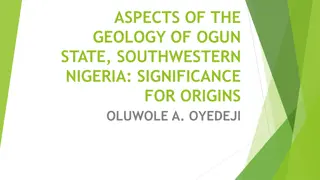



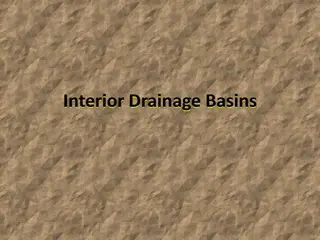
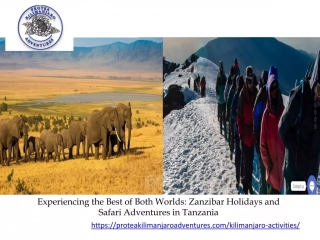
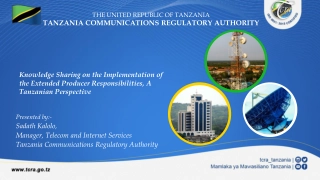
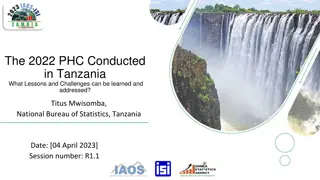
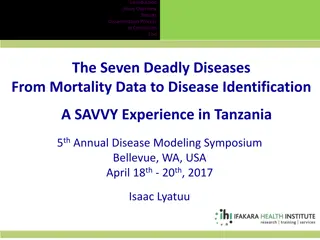

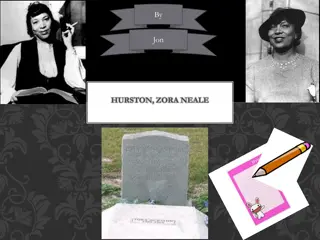

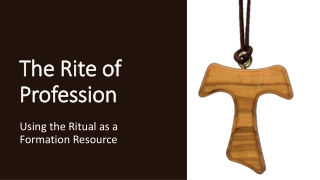

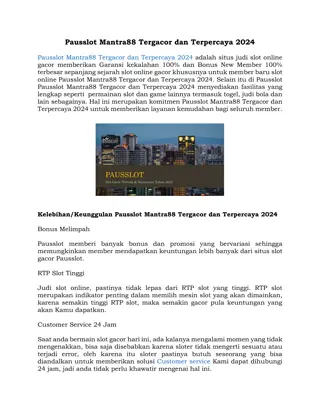


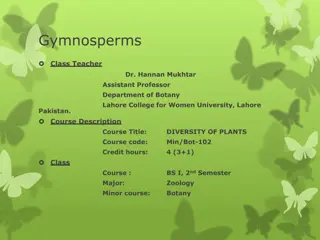


![READ⚡[PDF]✔ Emerging Space Powers: The New Space Programs of Asia, the Middle Ea](/thumb/21554/read-pdf-emerging-space-powers-the-new-space-programs-of-asia-the-middle-ea.jpg)

